#hanfu historical relic
Explore tagged Tumblr posts
Text
[Hanfu · 漢服]Chinese Ming Dynasty(1368-1644 AD) Hanfu Based On Ming Dynasty Painting & Heritage

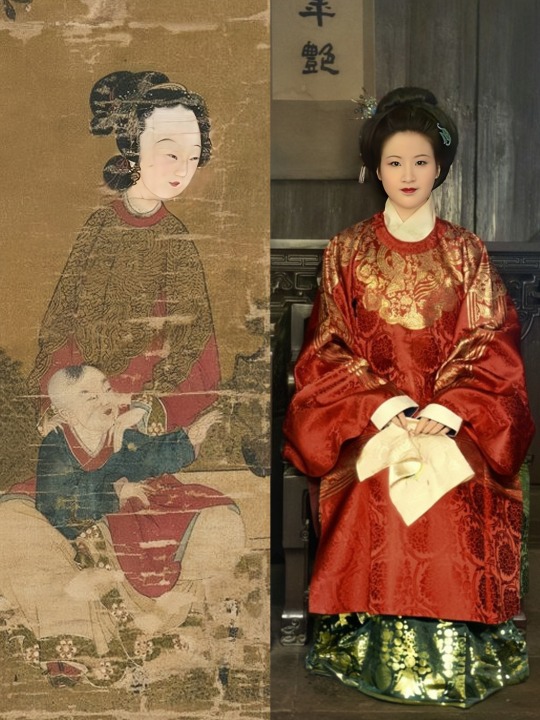
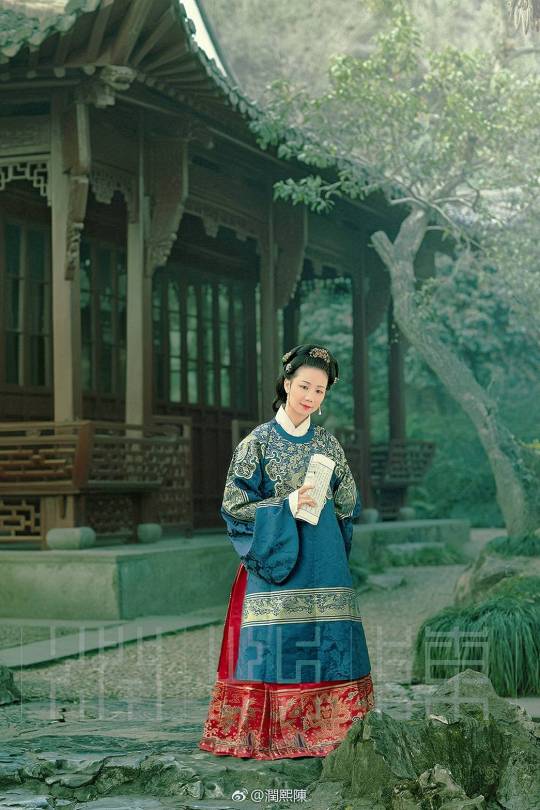
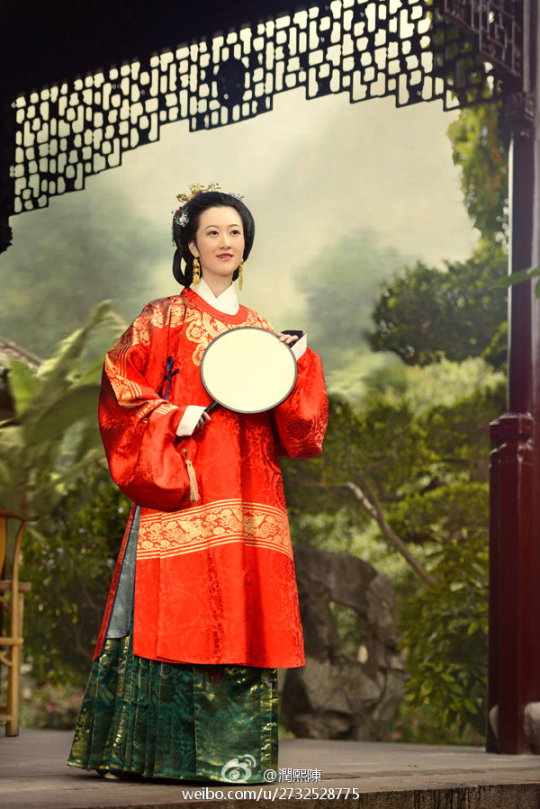





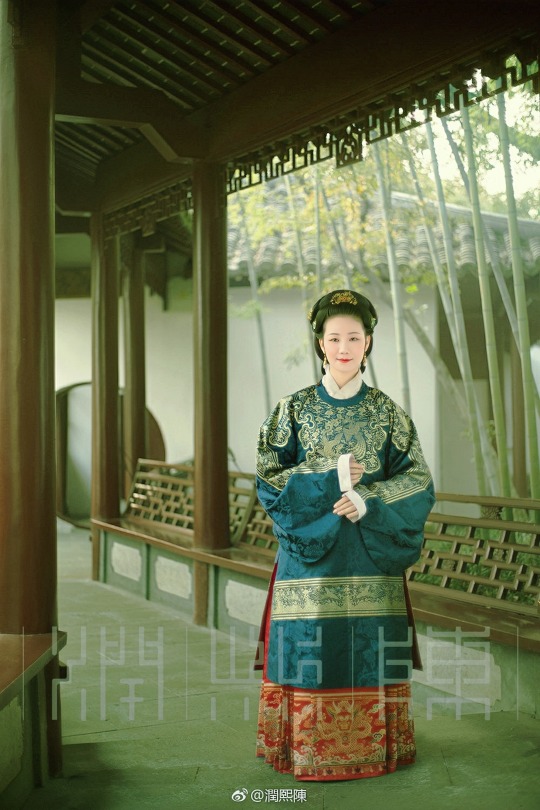


【Historical Artifacts Reference 】:
▶China Ming Dynasty Painting<The Beauty/仕女圖>, Attributed to Tang Yin 唐寅(款)仕女圖

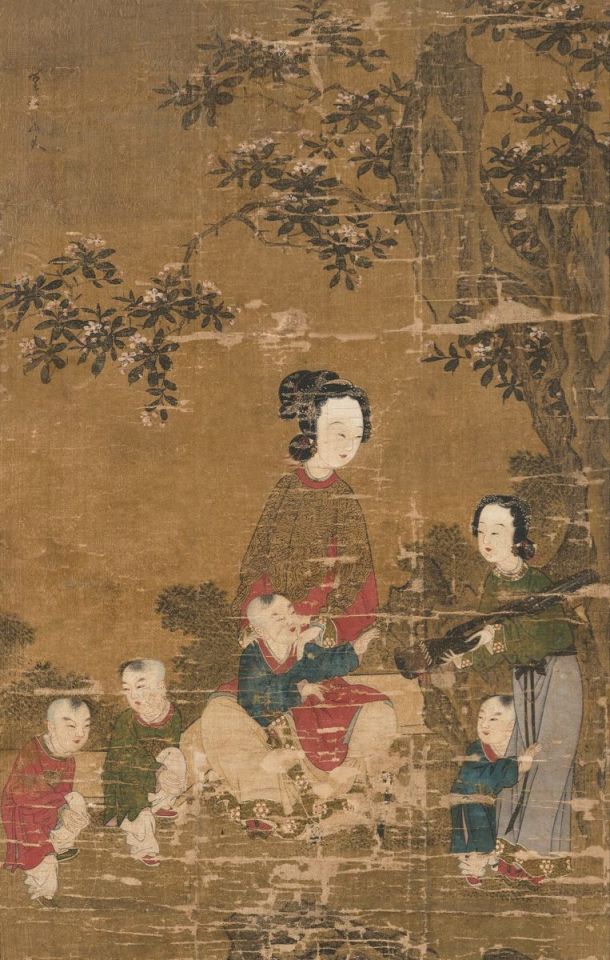
▶ China Ming Dynasty Hanfu Relics<绿罗织金凤纹袍/Green Luo Weave Gold Phoenix Gown>
Collection of Shandong Museum


▶China Ming Dynasty Tomb of the Yueshan family in Zhixian,unearthed in 2004.
The picture shows the hostess of Tomb 1 wearing a gold-woven Di bird(翟鸟)robe
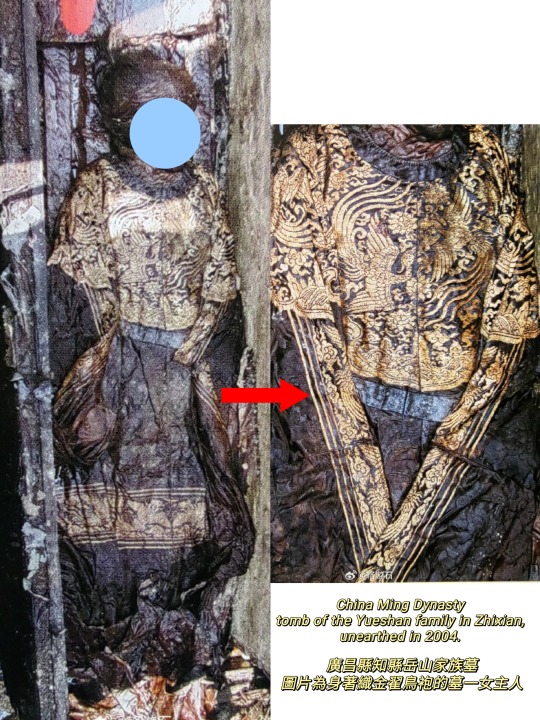
________________________________
Photo@潤熙陳(Weibo)
🔗 Weibo:https://weibo.com/2732528775/zxag2hdbh
________________________________
#chinese hanfu#ming dynatsy#hanfu#hanfu accessories#hanfu_challenge#chinese traditional clothing#china#chinese#Tang Yin#唐寅#hanfu historical relic#hanfu history#china historical fashion#chinese history
177 notes
·
View notes
Text
Hanfu movement is about MODERN ethnic clothing. What is the authentic “han” clothing? Who is going to decide for everyone? There are millions of Chinese around the world. Who could say something and everyone would follow? You? Me? The China government? Come on the moment China government said something it will be on the news that a totalitarian regime is mandating how people should dress.
Korean, Japan, Vietnam and England did not have such a tragic discontinuation of wearing their style when they all have their “modernization” period of pain. Also, have you considered the amount of Chinese involved in the situation? Also the geographical differences, the culture background and the resulted fashion preference of those people? Having only one (1) style of clothing actually is not the norm. Like the Dai people could have very different clothing depending on their villages. And the related Thai women in Thailand have at least... 7 different blouses? And those are modern invention too. Less than 100 years.
I live in a country where wearing traditional clothing, at least for women (pretty sure this is a relic from the colonialism period - men wore the European clothes while the women wore the ethnic clothes to show “fusion”, “respect” etc.), is very normal, even for work. For example, Indians. What is the traditional clothing of an Indian woman? A sari, you may say. But in my experience, most people don’t wear sari to work. I asked my teacher why. She said she did not like showing the waist. I only had one colleague who regularly wears Sari to work. But she is also a priest. Also I am quite sure that she only wears Sari when she is going to the temple on that day. What does the other wear usually? Usually they wear a tunic plus a trousers. There are many many many different types of tunic and I did not follow them. Each type of tunic are most likely came from different region (so the bottom to match is actually slightly different, but again, I did not follow). I remember back in high school, once they showed about 20 different types of Indian clothing, each from different regions, or different kingdoms historically. And that was put together by one (1) schoolmate. I am sure there is much more variants in Indian traditional clothing.
In addition, clothing from each dynasty reflected their characteristics. And modern Chinese needs something that reflect them. So why stick to a dynasty when you have so many to chose from? Looking back at different periods of time was also what people did back in the days (Ming dynasty), but they did not have the technology nor the archeological discoveries that we can access nowadays. Also people from different regions have different needs. Certain styles would be more prominent in certain regions. And those not suitable for people will fall into disuse. Like, quju was rather popular a decade ago, but only a handful of people are into it now, because the construction of the clothing does not match modern needs.
So forming a modern Han clothing is still an ongoing process. It has only been, like, 20 years? It takes time to come to a conscious. Many people just started to wear hanfu recently. It takes time to build up their taste and wardrobe. Historically, it took a few decades for Ming dynasty to settle into their own style. Chill. People will come to a conclusion. Give them time. Give yourself time.
If one don’t want to sit it up one could always wear the cheongsam. Even then there are so many different cuts to choose from. XP There is also non-cheongsam Chinese traditional clothing but people probably don’t recognize them and only really old grannies wear them nowadays. And most of them switched to buttons, at least in my region.
On the other hand, please consider cultivating your own social experience. And only hang out with friends or circles that decided on the style you also liked. I know there are people who are firmly focus on late late Ming style. There are also a lot of events and gatherings that are style-limited. YOU CAN MAKE YOUR OWN CALL. Don’t let the others decide for you. If you wear hanfu, you are one of the movement. Development your own circle if you like certain style. Consider becoming an influencer if you want people to follow your way. (Also, some people are only in for the money and know no shit about hanfu. So beware.)
Lastly, the online filter bubble is actually very strong if one picks the right people to follow. Like, a couple months ago I asked my friend what did she think about the fashion trend this year because I couldn’t see one. She said, definitely heziqun, especially for the newbies. For me, I have seen nearly zero news and updates on heziqun since Qinghuige time because I only followed a selection of people and bots on weibo. Since anyone wearing hanfu as daily wear for a few years knew heziqun is a recent invention (less than 3 years) as the whole structure is ridiculous and tedious to wear, so heziqun isn’t something those people would consider. Therefore I don’t see them on my dash. There were a couple of beidaiqun. Meh. Tang style is a wild place. Don’t go into Tang style if you want 100% historical accurate style. Or don’t even go into general hanfu fashion but only follow that handful of research and reconstruction blogs.
TLDR: There is no one that has the authenticity in Hanfu Movement to decide what specific style people should stick to. Make your own decision and hang out with people of like mind if you don’t want to see a variation of styles appearing in one place.
#hanfu#rants#long post#either be proactive or just go with the flow#like if you are the host you can decide the theme#otherwise you can't decide what the other guests would wear#well i am sure you can gossips with your friends#but you can't go up to a stranger and tell them they should wear not this but that
186 notes
·
View notes
Note
Coucou ! :D Pour les questions des mariages, si ça ne te gêne pas, la question 9 ou 18 ou 21 au choix (ne te force pas à faire les 3, surtout pour la 9 qui doit prendre pas mal de temps ^^') pour n'importe quel couple que tu aimes bien ! :D Merci beaucoup d'avance !
Salut et merci beaucoup :) Du coup j'ai fait les 3 parce que pourquoi pas (et avec des digressions un peu partout) ! J'ai laissé les dieux décider de chacun des couples !
9) Show us a mood/stimboard of their wedding's general aesthetic...
Pour Gladys et Dimitri (le mariage royal, hohoho !) TADAM !

(Bon j'ai tordu un peu la consigne donc c'est autant un moodboard sur leur relation que sur l'esthétique de leur mariage. On ne le dit jamais assez, l'image du milieu a été dessinée par la talentueuse Yzderia.)
18) Did anyone oppose the marriage? Did they speak then, or did they just forever hold their peace?
...Pour Felix et Vigdis.
Comme a dit une personne très sage : "haters gonna hate". Il y a forcément des gens qui ont trouvé de quoi critiquer ce mariage, que ce soit à cause des origines de Vigdis ou pour n'importe qu'elle autre raison triviale.
Mais comme ça reste le mariage du duc et que Vigdis est une héroïne de guerre qui a des connexions importantes, personne n'aurait osé l'ouvrir pendant la cérémonie.
De toute manière, Philippe a bien vérifié la liste des invités avant histoire d'enlever ceux qui pourraient poser problèmes vu qu'il veut que son neveux passe le meilleur moment possible.
Par contre c'est évident que Sylvain est allé voir Felix avant la cérémonie pour l'asticoter et lui ressortir un truc edgy sur la romance et le mariage que Felix a dû dire à l'Académie. (Loog approuve tout à fait ceci mais attention au karma, Sylvain. Felix ne va pas te manquer).
(Après reste la question triviale de savoir si Vigdis a finalement mis une robe pour son mariage. Mais vu qu'elle dit à Gladys dans un des chapitres qu'elle "mettra une robe au moment où Gladys s'y attendra le moins", sans doute pas).
Au final, ça reste donc une cérémonie qui se déroule très bien !
21) Do they have a honeymoon? Where to? How soon after?
...Pour Loog et Maude !
Vu que le mariage se passe juste un peu avant le début de la guerre, pas vraiment, non. Et d'ailleurs, Loog culpabilise de n'avoir que ça à lui offrir, même s'il est profondément heureux et ému qu'elle reste avec lui malgré ce qui se profile. C'est pour ça qu'il se promet de se rattraper dès qu'il le pourra et de traiter sa dame comme elle le mérite.
La cérémonie est aussi festive que possible. Ils veillent bien à ce qu'il n'y ait aucune décoration blanche, vu que c'est la couleur du deuil en Dagda, pour ne pas rappeler de mauvais souvenirs à Maude. Du coup ils sont soit tous les deux habillés en bleu, soit elle en vert et lui en bleu. Maude a une fleur dessinée sur le front, ce qui est un maquillage traditionnel de chez elle. C'est quelque chose qu'elle fait toujours tant que c'est possible.
Un peu comme ici :
D'ailleurs, si tu veux voir des tenues de la période dont je m'inspire pour les vêtements dagdaniens, je te conseille vraiment ce tumblr. Il y a de très beau vêtements et de très jolies reconstitutions :
Mais cela dit, cela ne les gêne pas non plus parce que Loog et Maude sont heureux juste en étant ensemble. Un chroniqueur de l'église qui les a rencontrés lors des fameuses négociations note qu'ils s'apportaient beaucoup de joie l'un à l'autre.
Du coup la "lune de miel" c'est plutôt après, lorsqu'ils peuvent prendre plus de temps pour eux. Lorsque leurs responsabilités les amènent à se déplacer, ils en profitent pour visiter Faerghus. Ils finissent par avoir de nouveau le temps d'apprécier la paix.
1 note
·
View note
Text
Future Plot: Voyage of the Shinkirō - Chapter 6
((Sandra, Pyrrhus, and Dicorus belong to me
Camille belongs to @inklingleesquidly
Nebula belongs to @myzzy and @agenttwo
Vix belongs to @teamuntyblue / @ryan-sign-guy
Beaker Jr. belongs to @askvincent / @asktheseastars and @scrushling
Marine and Wish (The Neo Clone Sister belong to @inklingleesquidly @myzzy @agenttwo and @teamuntyblue / @ryan-sign-guy ))
Tortuga Bay, Santa Cruz Island - Galapagos Islands, Ecuador - 8:05 PM
The fleet takes the Shinkiro back into open waters to meet with the massive ship that commands the fleet. The fleet's crew members weren't as hostile as expected by Sandra; in fact, when they were close to the massive ship, the captain look down on the Shinkiro.
The fleet leader is an adolescent inkling boy with tan skin with fair black ink hair. He had two distinctive eyes: one was the darkest brown any person would see, the other is a strange blue with the iris being mosaic-like. In addition to his hair color, it glowed with a blue hue.
Nebula can recognize the squid. "Dicorus!?!"
"Lady Sevenstar! Lady Squidly!" Dicorus doesn't recognize Sandra, Vix, and Beaker Jr. "New friends of yours?" He turns into a squid and super jumps to Sandra's ship. After changing back, he is more visible, wearing Byzantine military uniform for an explorer's attire with a jacket to mark that he's the leader.
Minutes later, the Shinkiro's sails that were lost at sea were returned as Dicorus's fleet has found them while sailing to the Galapagos. Dicorus hopped onboard the Shinkiro so that he can meet with Sandra and her Crew face-to-face. Nebula explained to Dicorus why she and Camille are out at sea with some friends. Dicorus understood the situation and approached Sandra.
"I should say, you have quite the determination to get to what was called the New World," Dicorus complimented, "My fleet is heading there too to stop in Hawaii before sailing to Panama. We're going there to extend the Silk Road by using ancient sea routes. It's kind of weird we're sailing away from our final destination and later doing the opposite when we reach Hawaii.."
"I don't blame you." Sandra does a curtsy. "And it's a great offer you're giving."
"Then we agree?" Dicorus smiled.
Sandra nods.
"Alright then." Before Dicorus goes, he stops to look at Camille and Nebula. "Also I visited Japan about 5 days ago and it seems I meet some relatives of your that decided to join in. They mentioned you two when they came on board."
"Huh?" Camille raised an eyebrow.
"Who are they?" Nebula asked.
"You'll see for yourself." Dicorus looks up and signals his crew members to bring them to the Shinkiro.
Soon a crane from Dicorus's ship lowers a platform down like an elevator for two inkatarians in sailor outfits. They have a striking similarity to Camille and Nebula and that the one that looks like Nebula is pale. They were wearing outfits that are a mix between hanfus from China and 18th century Navy uniforms from Great Britain.
It's the Neo Clone Sisters, the clones created from the DNAs of the Neo Squid Sisters and octarian DNA with a few mutations in the process of cloning. As a result, Camille's clone, Marina, has developed unique powers but as a cost, she has medical conditions that need to be monitored at all times. As for Nebula's Clone, Wish, she also developed unique powers of her own along with medical conditions.
And from just one glance, Camille runs up to embrace her duplicate. Marina was glad to see her duplicate as well. Nebula approached Wish and they both smile, both giving a nod. Though, Wish can barely see her duplicate.
"Are you guys related?" Dicorus raised an eyebrow.
"It's a long story," Camille replied.
Beaker approached Marina and Wish and said hello to them before giving them a hug. Sandra did the same; she wanted to know more about these duplicates as Agent M and Agent C were the only clones she knew when she was adopted. Vix has already met them before, and this time he's introducing to them his tortoise companion, Reve.
"So you and Wish really hope on board a boat just to follow us?" Camille asked her duplicate.
"Sort of, Wish and I only found out you were away from those Agents." Marina was probably mentioning Celeste and Telemachus.
"Hmmm..." Sandra looked at Dicorus. "Is it okay if these clone sisters join my crew?"
"I don't see why not." Dicorus shrugs. "After all, we stopped by some islands for Marina to excavate some relics, and Wish has been a help in organizing and managing the fleet's working conditions."
"Well, great! Then we better get sailing then!" Sandra is eager to go even if it's night.
"Now, now, Sandra, we need to sleep," Dicorus pointed out, "And it's quite too early; we still have time."
Sandra gave a weak laugh, embarrassed of what she said. Dicorus did mention Marina has excavated relics on some islands so Sandra can assume the Neo Clone Sisters have an interest in archaeology.
"So, Marina, Wish, want me to show you around? Sandra asked.
"We would love to," Marina politely responds.
When Sandra began a small tour around the Shinkiro, she began talking to them about archaeology. Soon Sandra shared a brief history of her family's archaeology career while Marina and Wish shared their stories of their archaeological explorations.
Meanwhile, Beaker Jr. and Vix return to sleep in their quarters. There was one more person Dicorus wanted Camille and Nebula to meet.
A young sailor super jumps his way down and lands on the mast. He climbs down from there and faces Camille and Nebula.
It was the same inkling boy with fair skin, opal-colored ink hair with a red spot on his ponytail, and a yellow eye. He still had a blue eye patch and brass bracelets. This time he wore a white shirt and shawl with a brown vest and boots. His shorts was the usual Inkling style.
"Meet Pyrrhus Issa Kerkysera, when he went on board, he started befriending Marina and Wish," Dicorus explained, "and then he realized he meet you in Guam, so he wanted to join the crew to see what adventure you friend is up to."
Pyrrhus approached Camille and bowed slightly before taking her hand like a gentleman.
"My apologies for not recognizing an idol like you." Pyrrhus looked to Nebula. "And you must her sister."
"Cousin actually," Nebula corrected.
"Yeah... The sister thing is just the name." Camille quickly reacts her hand away from Pyrrhus. There was something about this inkling that made her feel odd.
"I'll be getting my things and bringing them on board this ship." Pyrrhus turns into a squid and super jumps to Dicorus's flagship.
Camille just watched him leave the ship. She stepped forward and felt lost in thought for a moment. Dicorus notices and waves his hand in her face. Camille reacted and looked at him.
"Oh, sorry. Didn't mean to be rude." Dicorus then yawns. "I shall be heading to my quarters as well." He turns into a squid and returns to his ship.
Nebula stands next to Camille and points out the obvious. "Just putting out there, he does look like your old boyfriend. You know that one that was the son of Er-"
"Nebby, please!" Camille turns around and heads to her quarters. She sounded annoyed. "That's behind me! It was never meant to be anyway! I'm going to bed!"
The Shinkiro - Pacific Ocean - 10:00 AM
In the morning, the Shinkiro leave the Galapagos, sailing with Dicorus's fleet. Dicorus decided to temporarily make Sandra's ship the second flagship of his fleet.
On the Shinkiro, Dicorus was standing on the upper decks to monitor the crew members. Sandra was controlling the steering wheel, controlling her ship while leading Dicorus's fleet. Camille and Nebula were managing the sails with Beaker Jr and Pyrrhus helping out. Vix and his giant Galapagos tortoise, Reve, were washing the decks. Marina and Wish were also on the upper desk, examining maps and charts; Wish had to wear sunglasses and carry an umbrella due to her medical conditions.
In the middle of the trip from the Galapagos to the Hawaiian Islands, it was kind of quiet at the moment despite there being the sound of waves and the winds.
Dicorus decided to do something about.
"This is gonna be a long trip," Dicorus suggested, "How about we sing something?"
"Like what? A sailor's sea shanty?" Sandra understands what he's suggesting.
"Yeah, like a sea shanty." Dicorus looks to his fleet. "My fleet does it all the time while they do physical labor just to keep the ship going.
"I'm up for it." Sandra looks up." Hey, guys! We're going to sing!"
"What?!" Camille looks down.
"Cool!" Beaker replied.
Dicorus quickly gets to the crow's nest and signal his flagship and the fleet for a song.
((Musical Number: https://youtu.be/ubZrAmRxy_M ))
A conch shell is blown and Dicorus started to sing in a language he picked up on the islands he visited.
While the Shinkiro and Dicorus's fleet are singing, Dicrous took this time to teach Sandra some methods of navigation. They were an ancient form of navigation that used the water, the stars, and the winds.
Whenever they ships stop at an island, Sandra took this chance to go on Marina's and Wish's Archaeologists adventures. They would find a few ancient sites and recover artifacts dating back from a time before the Mollusc Era from times of Ancient wars to time of an Ancient Tribe Camille and Nebula take those time to record videos for their producer back in Inkopolis; Beaker Jr, Vix, and Reve helped as the camera crew. Pyrrhus and Dicorus would be watching over the Shinkiro while Dicorus's fleet stopped for food, water, and supplies.
When Hawaii was just on the horizon, Sandra knows she's halfway there in reaching America. Hawaii may be part of the United States, but it's not enough for her. After all, she still needed to find her family.
((End of Musical Number))
Honolulu (Relocated), Loihi, Second Kingdom of Hawaii - 12:00 Noon
The islands have changed due to tectonic plates and volcanic activity. Some well-known cities were relocated while historical monuments remained where they were. Nature had does its part in relocating natural sites.
Everyone on the Shinkiro, including Wish, Marina, Dicorus, and Pyrrhus, were at the hull, looking at the islands.
"I didn't expect a musical number to bring us to Hawaii that quick." Beaker Jr scratches his head.
"Me neither." Camille sounded as if she was going to lose her voice.
"Welcome to Hawaii." Sandra was still on the upper decks, holding onto the steering wheel to sail the Shinkiro straight to the harbor. She won't be able to join her friends, so she had to raise her voice a bit. "It's the Aloha State, the Paradise of the Pacific, and the Islands of Aloha. As they say here: 'Ua Mau ke Ea o ka ʻĀina i ka Pono'. "
Camille looked at her. ".....What?"
"She meant, The life of the land is perpetuated in righteousness." Marina seems to know something about the language. "Where did you pick up Hawaiian?"
"My parents used to send me letters and packages that came from here," Sandra replied.
"I heard the volcano here beats Mount Everest," Pyrrhus stated. He was standing next to Camille.
"Only if you count the sea level," Dicorus acknowledged, "and to think tectonic rifts and faults can reshape the world."
"Nature's beautiful and it is ever changing," Wish commented.
"So, shall we split up and enjoy our visit to the island?" Sandra looked at her crew.
Dicorus raised his hand. "I'm in, obviously."
"Nebby, Beaky, and I won't mind, and it might make our producer happy." Camille rolls her eyes and a smirk.
Pyrrhus looked at Sandra and then at Marina and Wish. He steps closer to the Neo Clone Sisters. "You know, I heard from sailors that this island has a very long history, from being a small tribe to a kingdom; from a kingdom to the territory; from a territory to a member of the union. You and Sandra can find something here."
"No so fast, Pyrrhus, that is a bad idea. Anything made from the island and on the island belongs to a goddess. Dicorus is highly against that idea. "From sailors I know, I was told this is the home of Pele, and she curses whoever takes anything from that island. Humans may have been foolish to take from her home, so it's best we don't do the same."
"Hey! Is our fleet going to sail this slow? Full speed ahead!" Sandra ordered.
"I better get to my ship then!" Dicorus turns into a squid and super jumps his way to his ship.
Sandra's crew scattered, going to their stations to open the sails. Sandra offers Beaker Jr. the steering wheel so that she can raise the Shinkiro's flag again. It still has it's usual symbol: a muscle with a cloud coming out, and on that cloud is a castle housing paradise.
Sandra smiles that raised flag and looks to where Hawaii is.
She is this close to finding her Family in the New World.
9 notes
·
View notes
Text
[Hanfu · 漢服]Chinese Tang Dynasty(618–907AD)Traditional Crown & Hanfu In Cdrama 【国色芳华/Flourished Peony】
♦ 𝗖𝗵𝗶𝗻𝗲𝘀𝗲 𝗔𝗰𝘁𝗼𝗿: 𝗭𝗵𝗮𝗻𝗴 𝗬𝗮𝗾𝗶𝗻/张雅钦 as Li Youzhen (李幼贞) “县主/County Princess/Lord”




【Historical Artifacts Reference 】:
▶The crown and hair ornaments unearthed from the tomb of Li Chui,/李倕, a fifth-generation granddaughter of Emperor Gaozu of Tang China




2.Gold necklace inlaid with pearls and gemstones, Late Sui Dynasty
Excavated in 1957 from the tomb of Li Jingxun, Xi'an, Shaanxi,China.

"Flourished Peony" (《国色芳华》) is a really cool Chinese drama that dives deep into the Tang Dynasty. It takes a close look at the fashion, makeup, and etiquette of that time. The show’s team did a ton of research, to restore Tang Dynasty artifacts to get the hanfu and makeup just right. You can really see the effort they put into making everything look authentic and true to the era.
If you're into Tang Dynasty Hanfu,Makeup , or the whole vibe of that period, I highly recommend watching this drama. It's a great way to get a glimpse of ancient Chinese culture through a really well-done romantic drama. ---------------
【Debate on the Interpretation and Wearing of the Li Chui Tomb Crown Ornaments】
The crown ornaments unearthed from the tomb of Li Chui (李倕) are still a topic of debate due to the fact that the pieces were found scattered, making the exact method of wearing unclear. The version currently displayed in the museum is a reconstruction based on the collaborative efforts of Chinese and German experts. However, some scholars in China have a different view, arguing that this ornament may not necessarily be a "crown."
Fwe can refer to the perspective of the author(@左丘萌) of Chinese Beauty and Adornments: The Tang Dynasty Daughters (《中国妆束:大唐女儿行》), who offers an alternative interpretation of how this crown ornament was likely worn(If anyone are interested, you can save the picture and translate it through the translator)
the right is the author (@左丘萌)'s restoration result and analysis process of the relics:





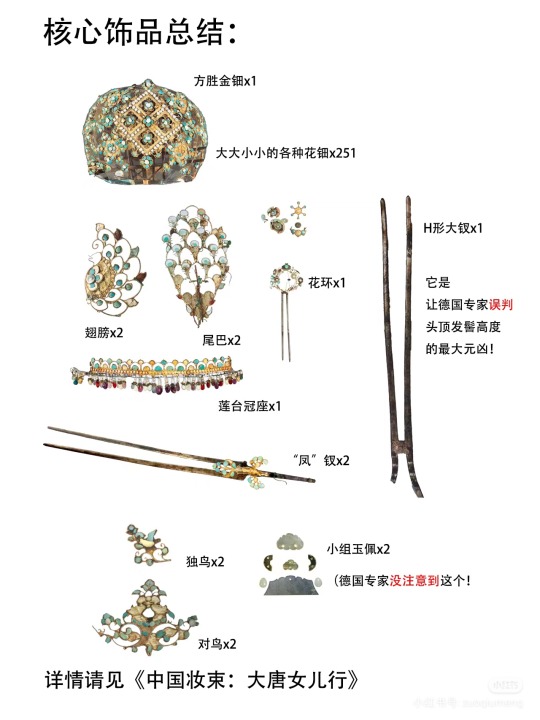




————————
📸Photo:Chinese Drama 【国色芳华/Flourished Peony】
🔗Crown analysis image source: http://xhslink.com/a/aJdFM1q0QIe8
————————
#chinese hanfu#Tang Dynasty(618–907AD)#crown ornaments#Li Chui#李倕#chinese drama#国色芳华/Flourished Peony#hanfu#hanfu accessories#hanfu_challenge#china#chinese traditional clothing#chinese
185 notes
·
View notes
Text
[Hanfu · 漢服]Chinese Late Warring States period(475–221 BC) Traditional Clothing Hanfu Based On Based On Chu (state)Historical Artifacts

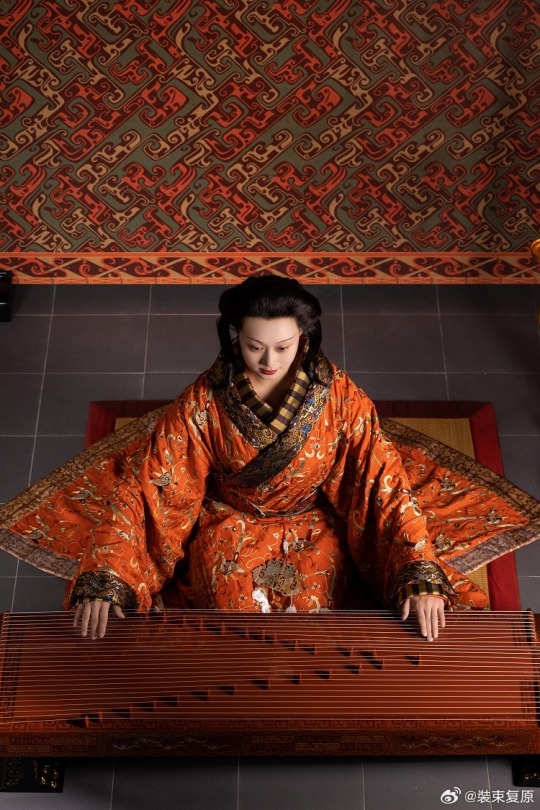

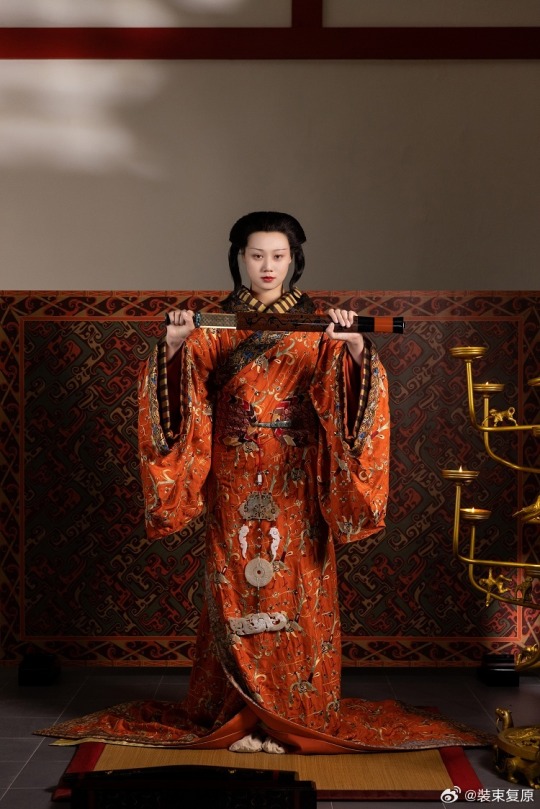
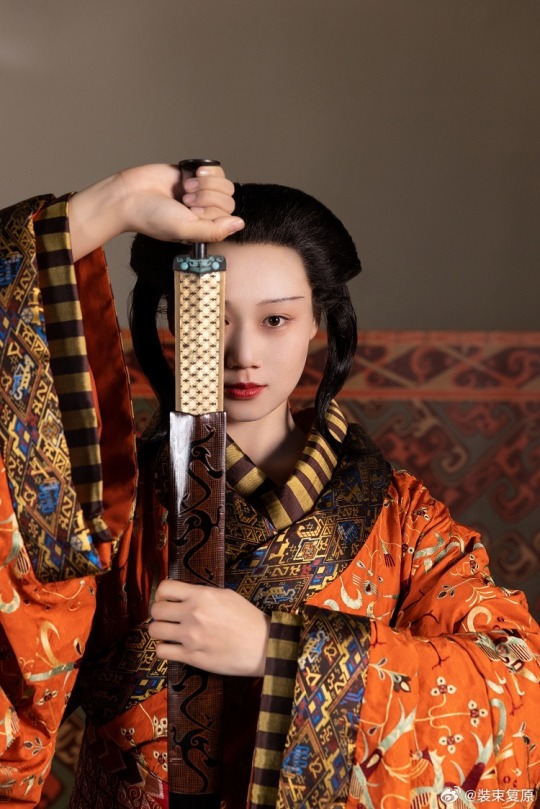
【Historical Artifact Reference】:
Late Warring States period(475–221 BC):Two conjoined jade dancers unearthed from Jincun, Luoyang,collected by Freer Museum of Art
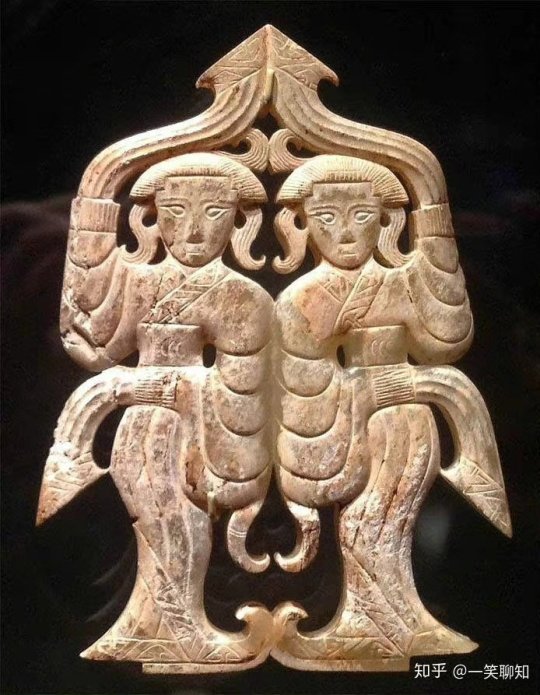
A similar jade dancer was also unearthed from the tomb of Haihunhou, the richest royal family member in the Han Dynasty, and was one of his treasures.
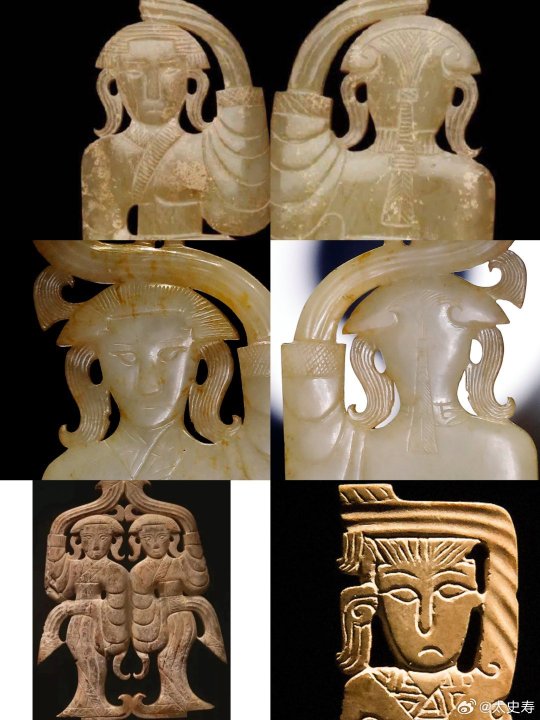
Warring States period, Eastern Zhou dynasty, 475-221 BCE,jade dancer by Freer Gallery of Art Collection.

Warring States period(475–221 BC)·Silver Head Figurine Bronze Lamp.Unearthed from the Wangcuo Tomb in Zhongshan state during the Warring States Period and collected by the Hebei Provincial Institute of Cultural Relics and Archaeology

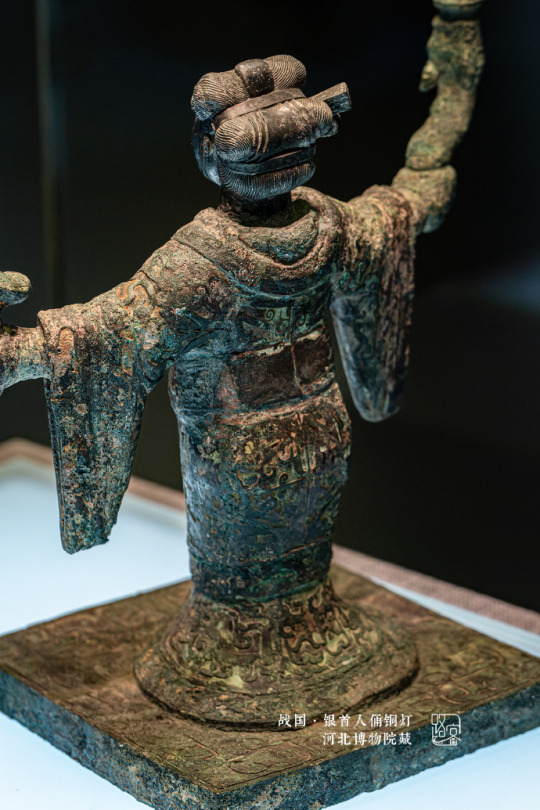
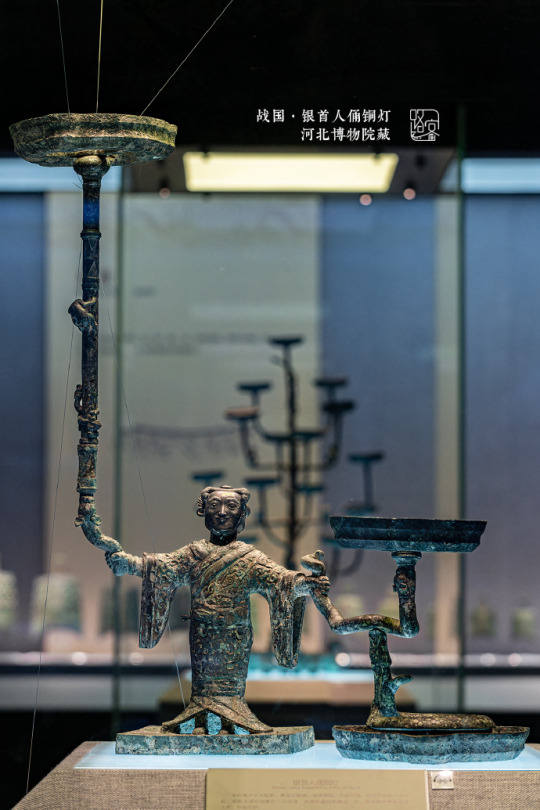
The figurine of a man dressed as a woman holds a snake in his hand, and 3 snakes correspond to 3 lamps.
Sword of Goujian/越王勾践剑:
The Sword of Goujian (Chinese: 越王勾践剑; pinyin: Yuèwáng Gōujiàn jiàn) is a tin bronze sword, renowned for its unusual sharpness, intricate design and resistance to tarnish rarely seen in artifacts of similar age. The sword is generally attributed to Goujian, one of the last kings of Yue during the Spring and Autumn period.
In 1965, the sword was found in an ancient tomb in Hubei. It is currently in the possession of the Hubei Provincial Museum.
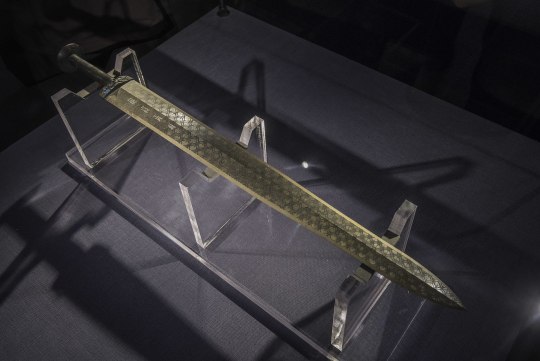
【Histoty Note】Late Warring States Period·Noble Women Fashion
The attire of noblewomen in the late Warring States period, as reconstructed in this collection, is based on a comprehensive examination of garments and textiles unearthed from the Chu Tomb No. 1 at Mashan, Jiangling, as well as other artifacts from the same period.
During the late Warring States period, both noble men and women favored wearing robes that were connected from top to bottom. These garments were predominantly made of gauze, silk, brocade, and satin, with silk edging. From the Chu Tomb No. 1 at Mashan, there were discoveries of robes entirely embroidered or embroidered fragments. The embroidery technique employed was known as "locked stitches," which gave the patterns a three-dimensional, lively appearance, rich in decoration.
The two reconstructed robes in this collection consist of an inner robe made of plain silk with striped silk edging, and an outer robe made of brocade, embroidered with phoenixes and floral patterns, with embroidered satin edging. Following the structural design of clothing found in the Mashan Chu Tomb, rectangular fabric pieces were inserted at the junction of the main body, sleeves, and lower garment of the robe. Additionally, an overlap was made at the front of the main body and the lower garment to enlarge the internal space for better wrapping around the body curves. Furthermore, the waistline of the lower garment was not horizontal but inclined upward at an angle, allowing the lower hem to naturally overlap, forming an "enter" shape, facilitating movement.
The layered edging of the collars and sleeves of both inner and outer robes creates a sense of rhythm, with the two types of brocade patterns complementing each other, resulting in a harmonious effect. Apart from the robes, a wide brocade belt was worn around the waist, fastened with jade buckle hooks, and adorned with jade pendants, presenting an elegant and noble figure.
The reconstructed hairstyle draws inspiration from artifacts such as the jade dancer from the late Warring States period unearthed at the Marquis of Haihun Tomb in Nanchang, and the jade dancer from the Warring States period unearthed at Jin Village in Luoyang. It features a fan-shaped voluminous hairdo on the crown, with curled hair falling on both sides, and braided hair gathered at the back. The Book of Songs, "Xiao Ya: Duren Shi," vividly depicts the flowing curls of noblewomen during that period. Their images of curly-haired figures in long robes were also depicted in jade artifacts and other relics, becoming emblematic artistic representations.
The maturity and richness of clothing art in the late Warring States period were unparalleled in contemporary world civilizations, far beyond imagination. It witnessed the transition of Chinese civilization into the Middle Ages. The creatively styled garments and intricate fabric patterns from the Warring States period carry the unique essence, mysterious imagination, and ultimate romanticism of that era, serving as an endless source of artistic inspiration.
--------
Recreation Work by : @裝束复原
Weibo 🔗:https://weibo.com/1656910125/O6cUMBa1j
--------
#chinese hanfu#Late Warring States Period#Warring States period(475–221 BC)#hanfu#hanfu accessories#chinese traditional clothing#hanfu_challenge#chinese#china#historical#historical fashion#chinese history#china history#漢服#汉服#中華風#裝束复原
288 notes
·
View notes
Text
[Hanfu · 漢服]Historical Chinese Style illustration Artist @御茶菓子XINYUE
She is one of my favorite illustrator. She draws inspiration from Chinese cultural relics and history in the creation of characters, and her use of colors is also amazing. Highly recommend her works to everyone.
If u like her work, please follow her on Weibo/Instagram
Instagram:https://www.instagram.com/zzxinyue/
Weibo:https://weibo.com/zzxinyue
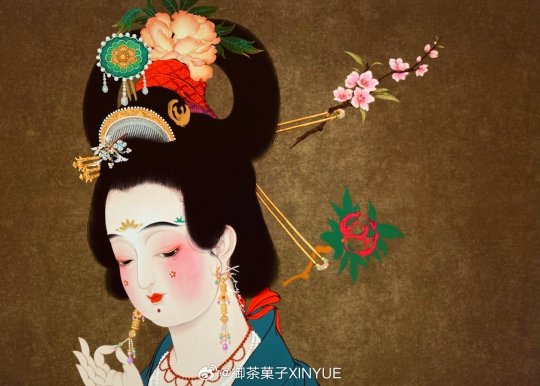
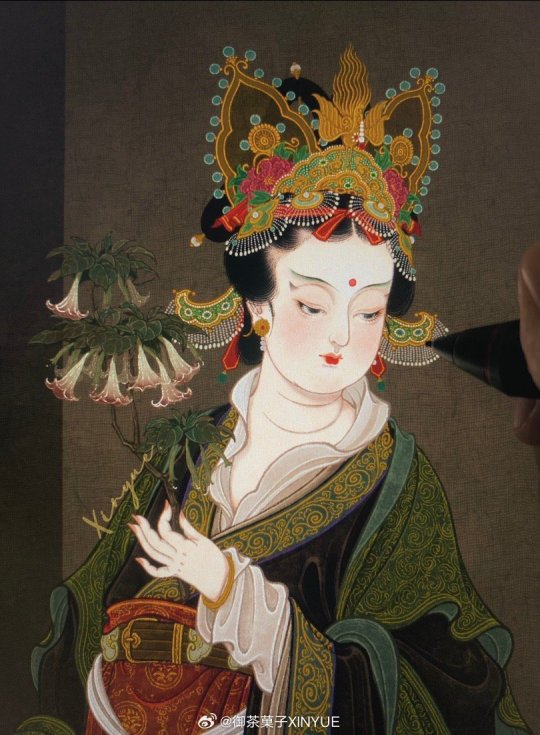
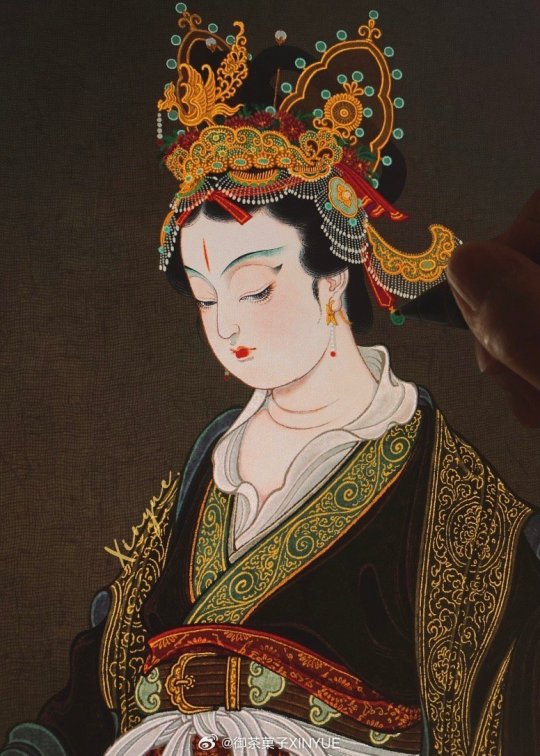
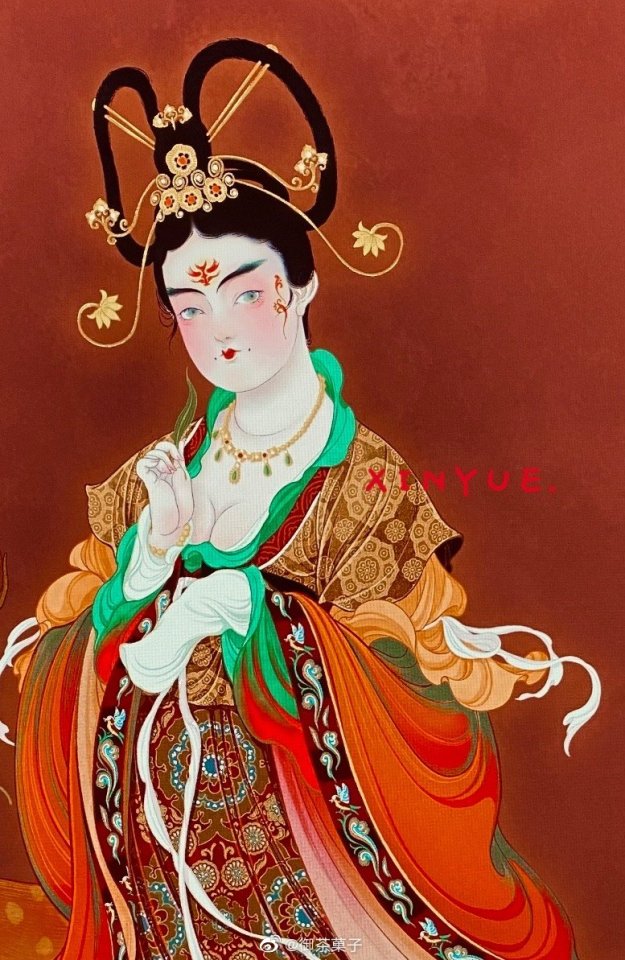
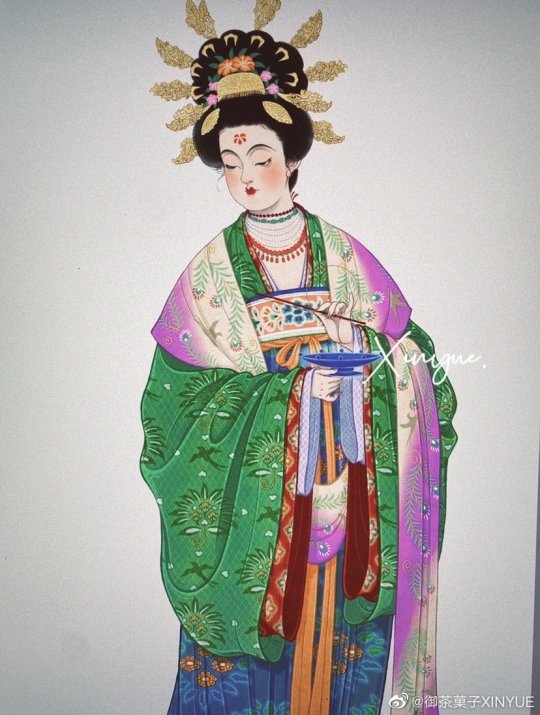
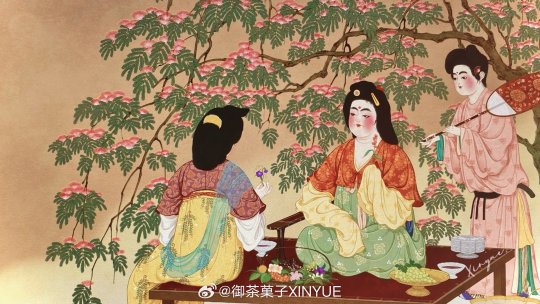
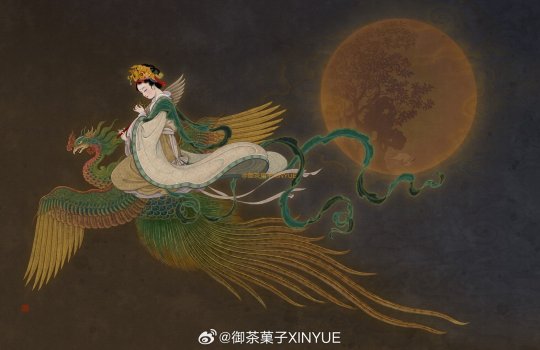
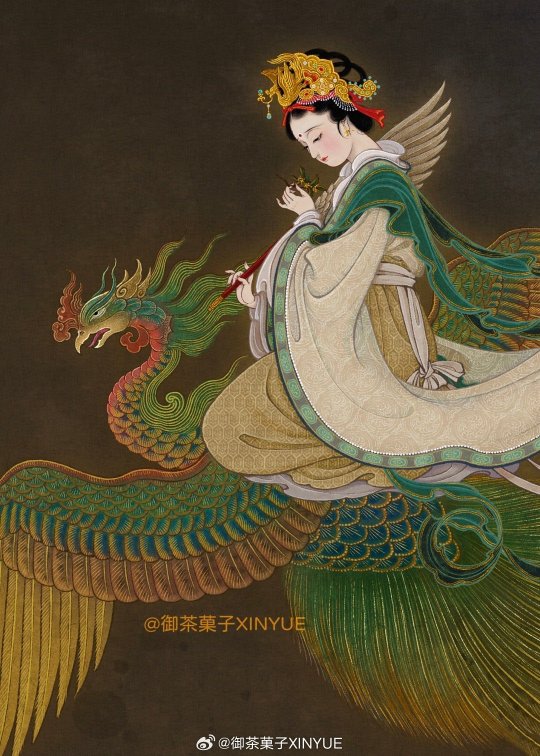
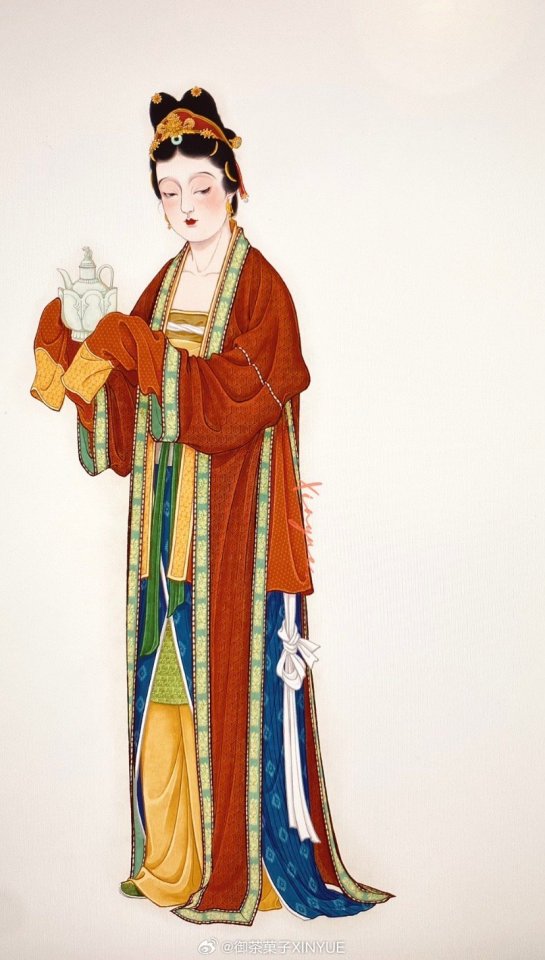
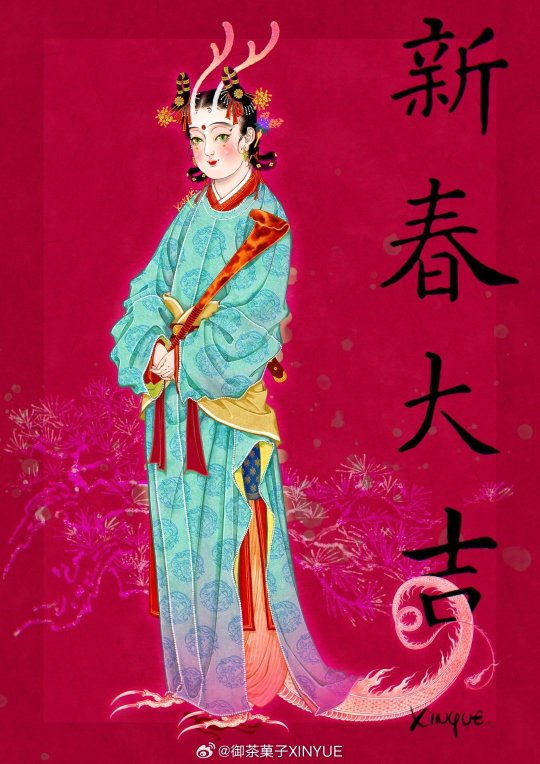
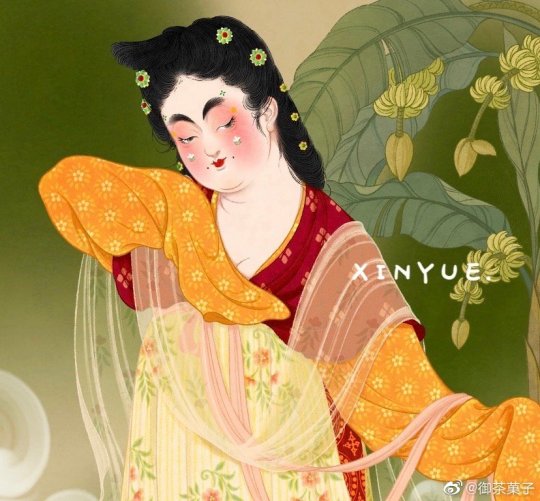
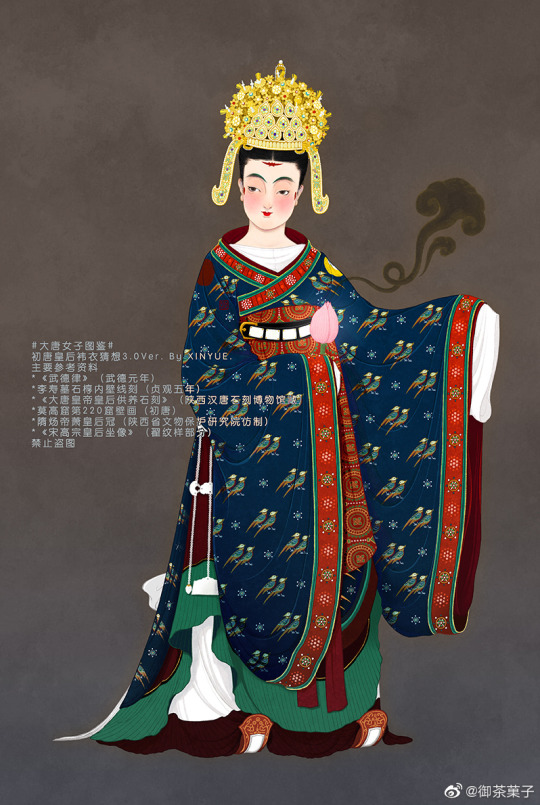
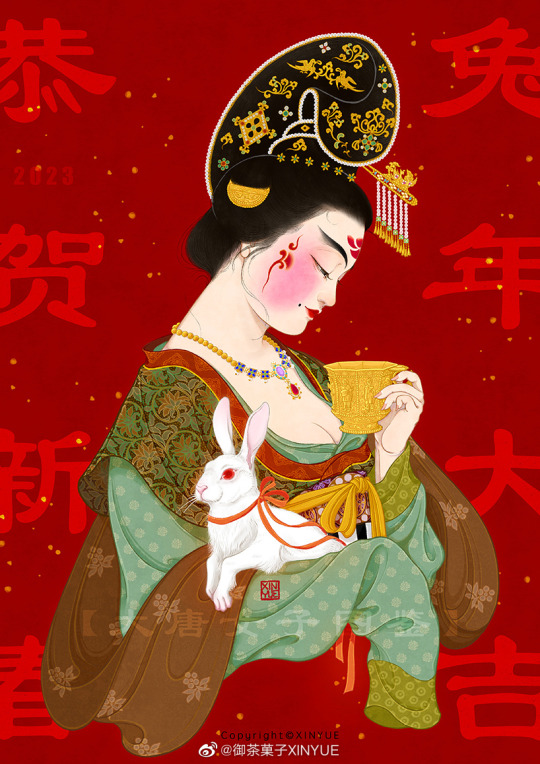
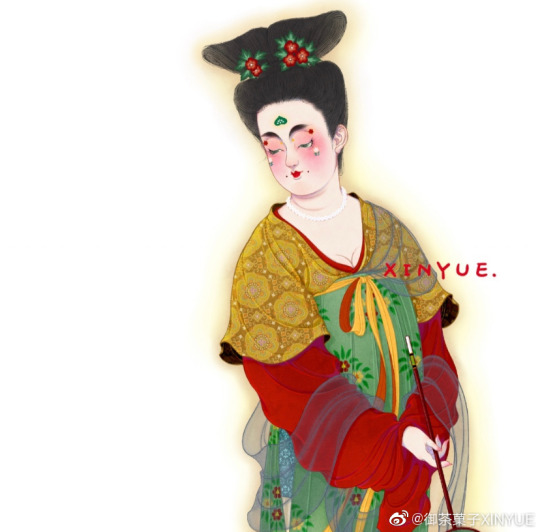


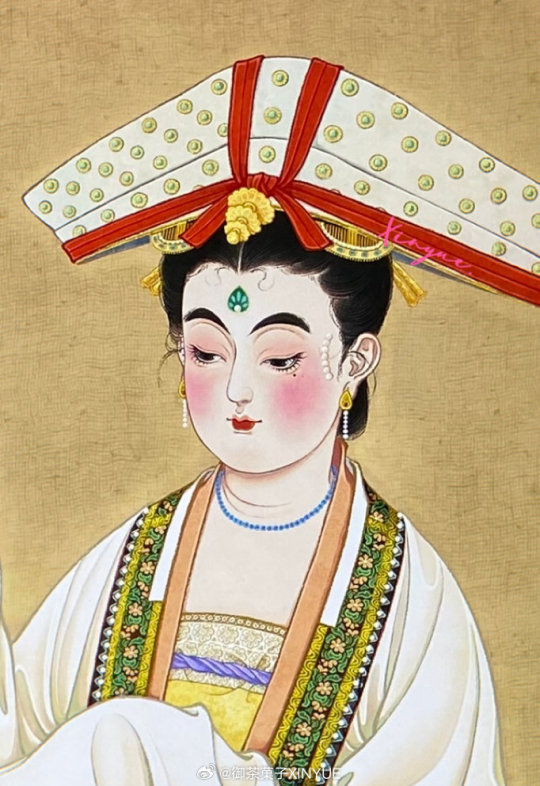
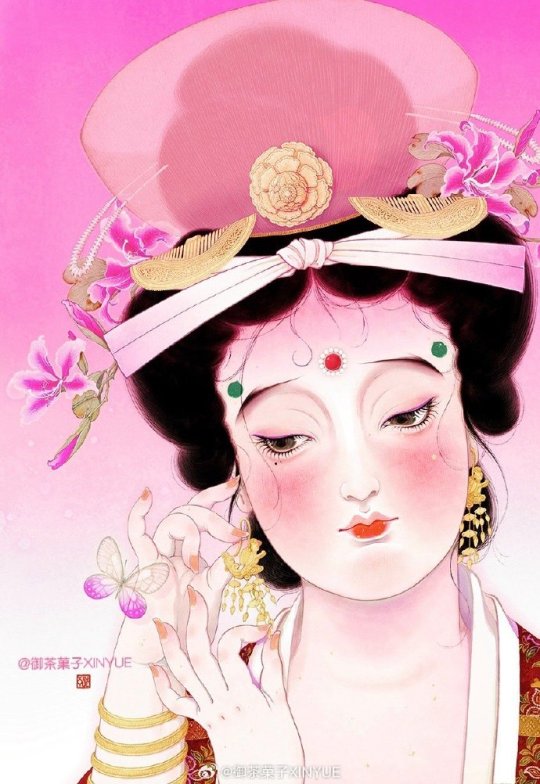
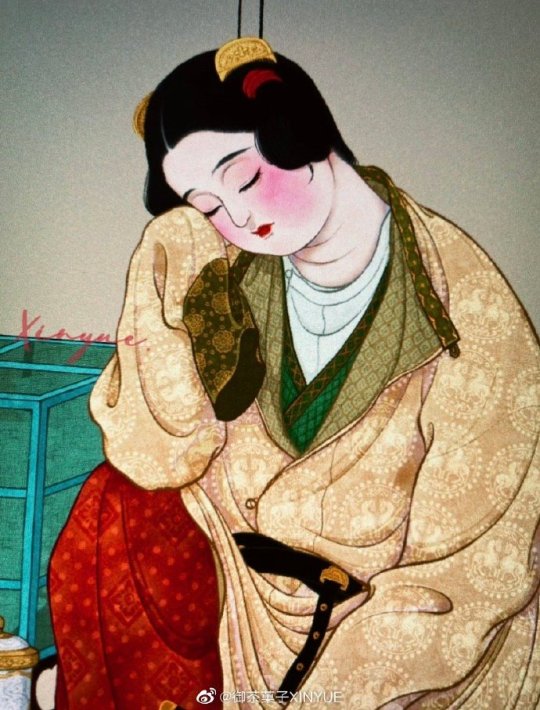
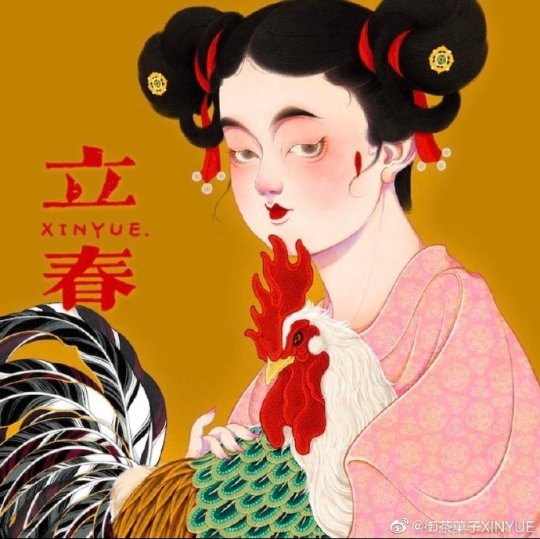

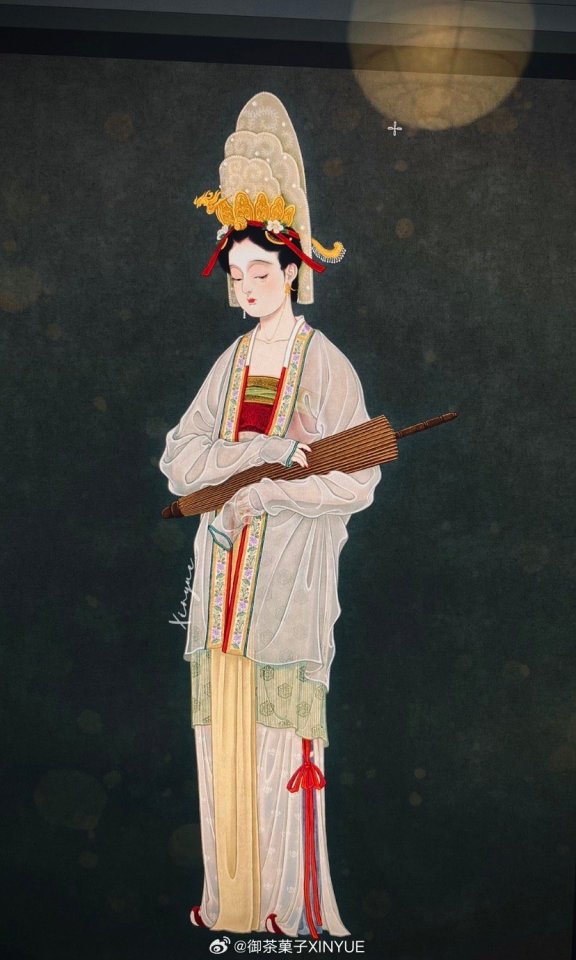
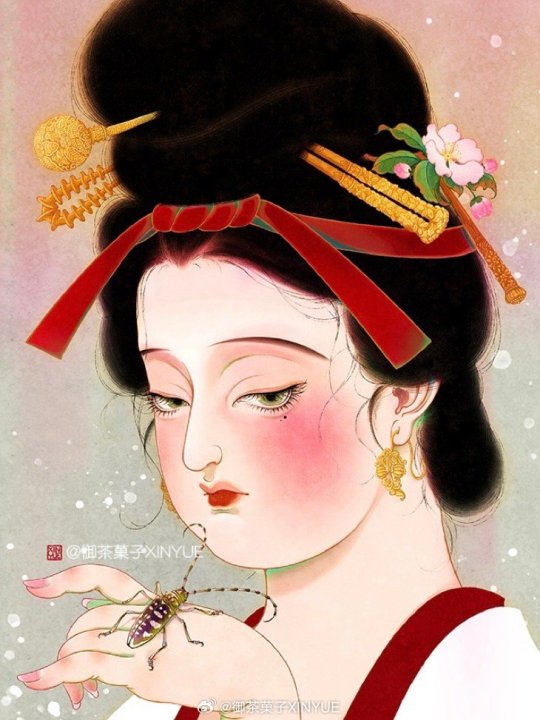
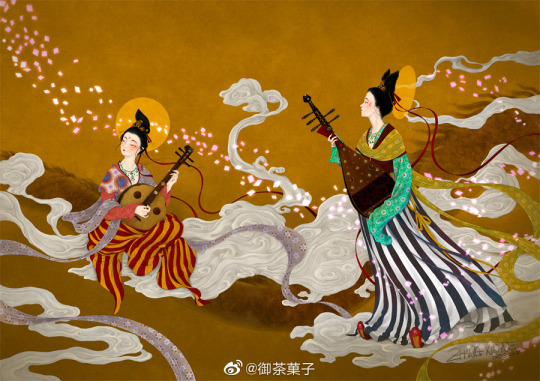
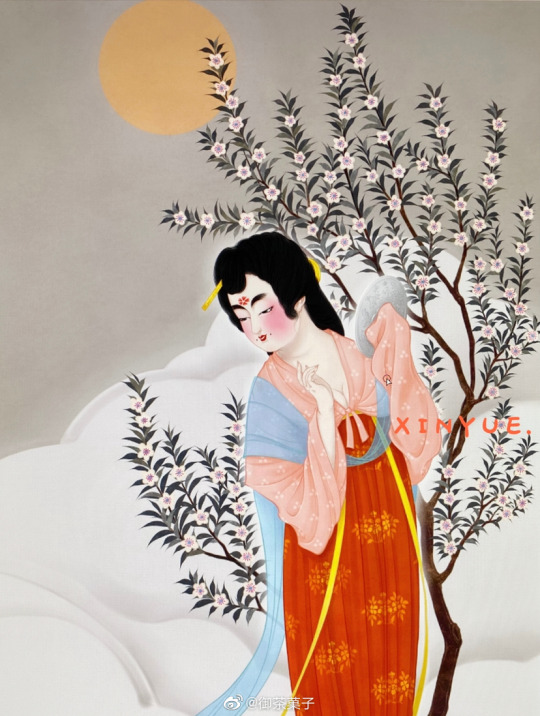
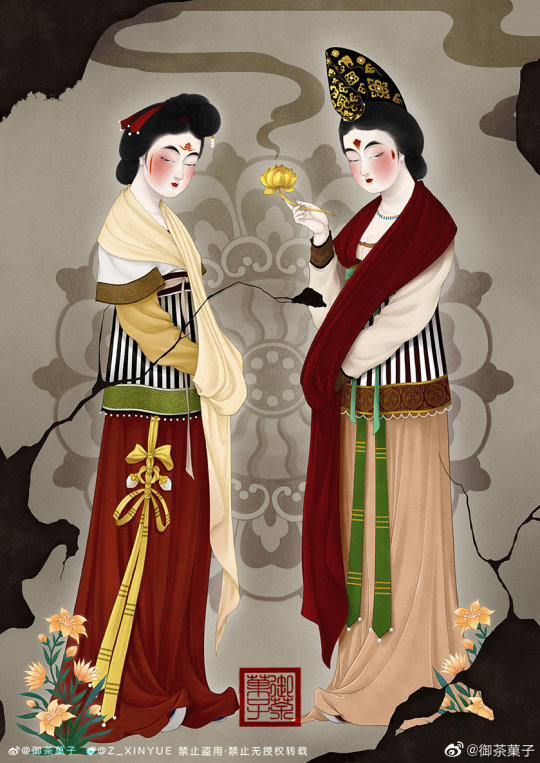
#chinese hanfu#hanfu#hanfu accessories#hanfu_challenge#chinese traditional clothing#china#chinese#御茶菓子XINYUE#hanfu illustration#illustrator#chinese artist#artist recommend#chinese style#漢服#汉服
216 notes
·
View notes
Text
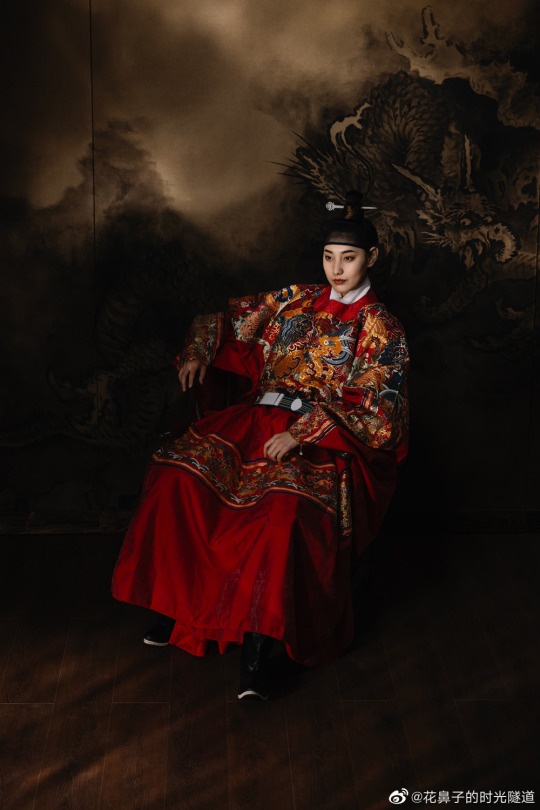
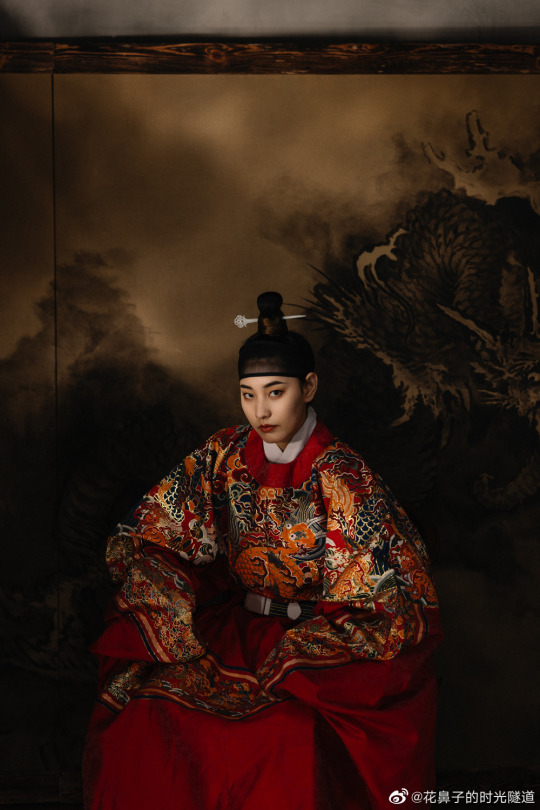
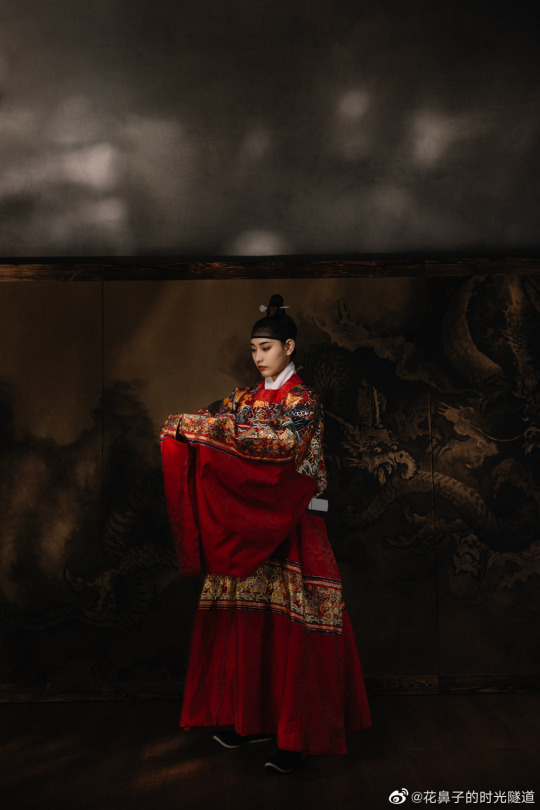
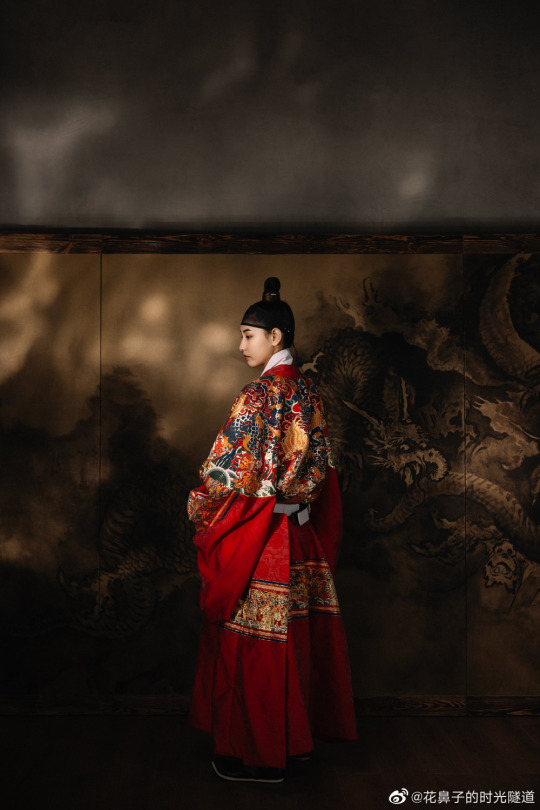
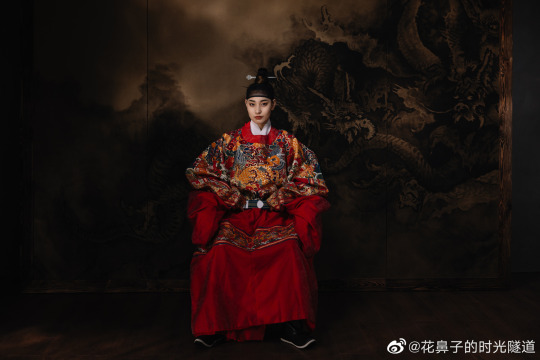
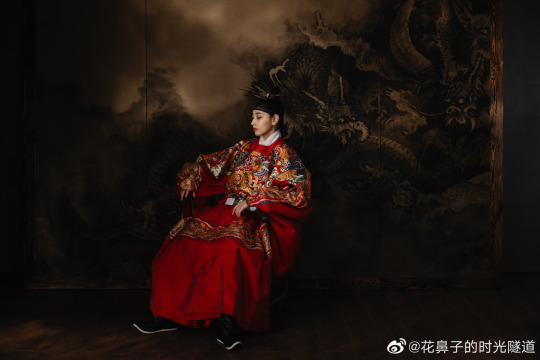
【Historical Reference Artifacts】:
China Ming Dynasty Hanfu Relics<大红色四兽朝麒麟纹妆花纱女袍>,Collection of Shandong Museum,China
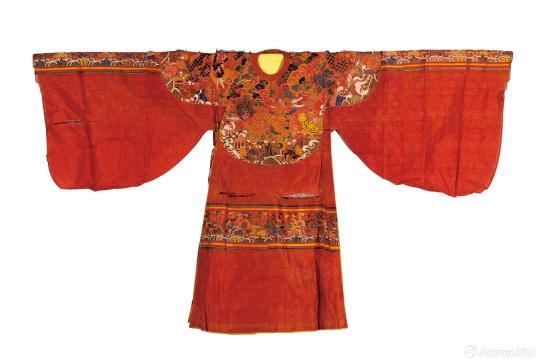
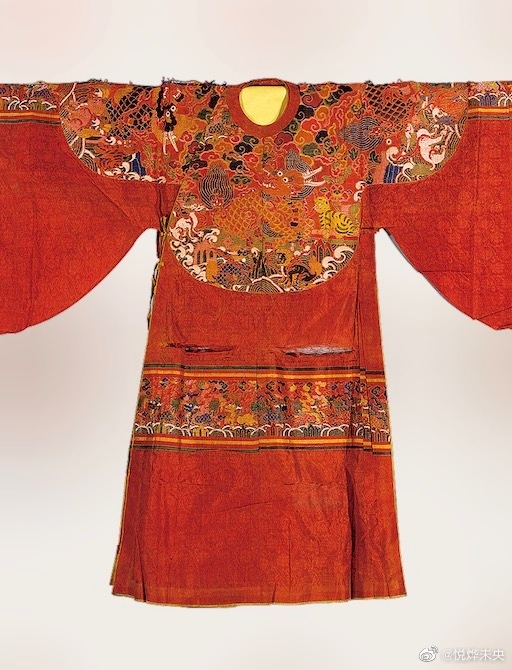
Ming Dynasty Emperor Wanli bestowed Japan Toyotomi Hideyoshi's robe(赐服)<赤地云龙纹斗牛袍>
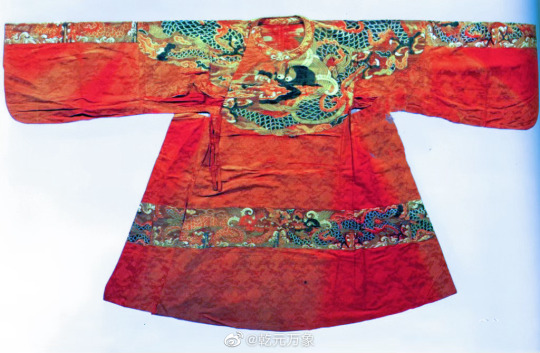
China Ming Dynasty Hanfu Relics<大紅雲肩通袖麒麟圓領>
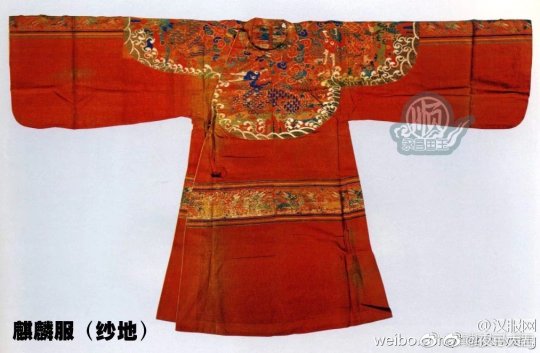
China Ming Dynasty Hanfu Relics:<红色妆花纱云肩通袖膝襕蟒袍>,Confucius Museum,China
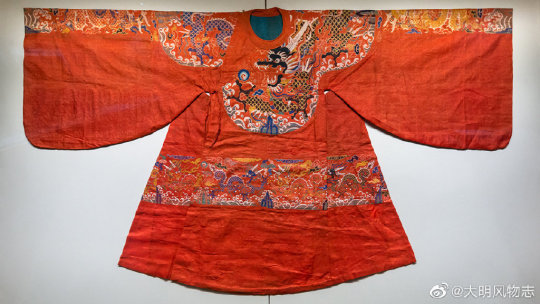
China Ming Dynasty Portrait of Kong Hongxu/孔弘绪, the 61st generation of Yansheng Gong (descendant of Confucius)
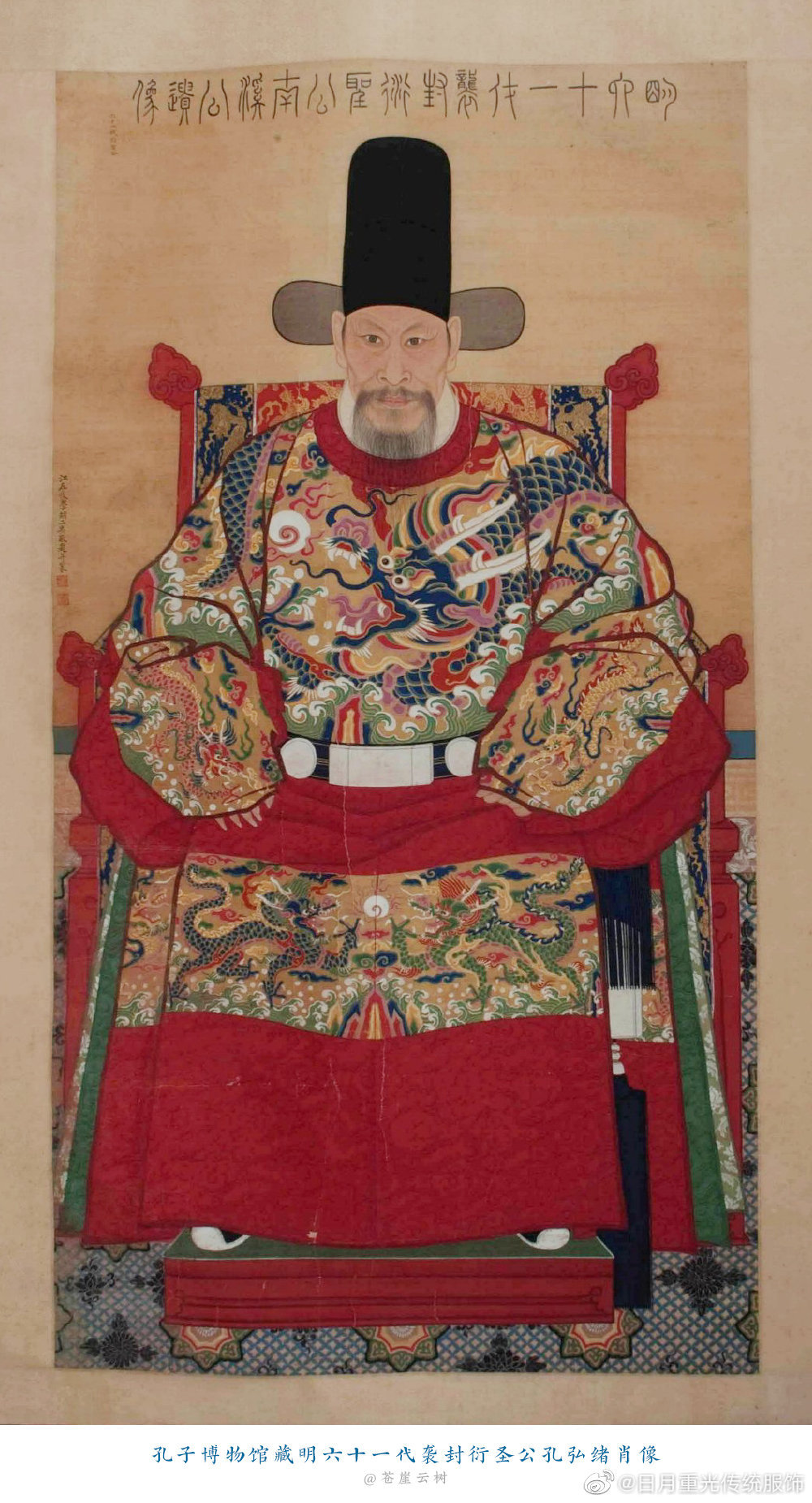
[Hanfu・漢服]Chinese Ming Dynasty(1368-1644 AD)Traditional Clothing Hanfu Photoshoot
亦男亦女
【About 赐服/Cì fú in Ming Dynasty】
<赐服/Cì fú> is a kind of clothing system. The imperial court rewarded meritorious men or woman with crowns and clothes to show their favor. Its system is complicated and diverse, there are “four-season clothes/四時衣", five-season clothes/五時衣” or Gesha/葛纱 and mink according to the seasons; there are Gongfu/公服 and flowers according to the seasons; etc. The clothes bestowed are usually higher than the rank of the recipient.
--------
Five-season clothes/五時衣:Attire of five different colors worn in five seasons in ancient times.
Four-season clothes/四時衣:Different Attire worn in four different seasons of spring, summer, autumn and winter
Gesha/葛纱:Gauze woven from kudzu fiber.
Gongfu/公服:one of the official attire
----
Clothing is a daily need, but because it is the emperor's reward that endows the meaning of class, it has become a symbol of the imperial class and the emperor's favor. Use highly recognizable patterns on the clothing to show status and class, making clothing a channel for "showing off wealth". Anyone who can wears <赐服/Cì fú>is a courtier who is valued by the emperor.
The <赐服/Cì fú> of the Ming Dynasty are divided into four levels:Qilin robe(麒麟服),DouNiu robe(斗牛服), Feiyu robe(飛魚服), python robe(蟒服)
The Fourth-Class is Qilin robe(麒麟服):
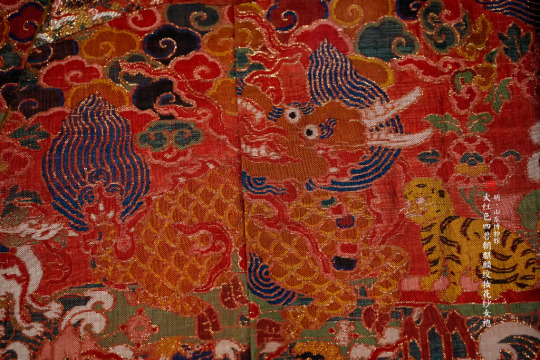
The qilin (Chinese: 麒麟) is a legendary hooved chimerical creature that appears in Chinese mythology, and is said to appear with the imminent arrival or passing of a sage or illustrious ruler.Qilin are a specific type of the lin mythological family of one-horned beasts. The qilin also appears in the mythologies of other Chinese-influenced cultures.
Because the Qilin is a beast of benevolence and righteousness in the legend, the emperor of the Ming Dynasty regarded the Qilin robe as a gift and rewarded meritorious officials of the fourth and fifth ranks. Although Embroidered Uniform Guard(錦衣衛)on-duty guards are not high-ranking officials, they are also allowed to wear Qilin robe(麒麟服) because of their special positions.
The Third-Class is DouNiu robe(斗牛服):

DouNiu(斗牛) is not an ordinary bull(公牛), but a legendary horned dragon(虬龙). The DouNiu(斗牛) is like a dragon with sharp horns, a python-shaped fish tail, and two horns bent like ox horns.Those who can be awarded DouNiu robe(斗牛服) include officials of the third rank and above, generals who have made meritorious service in guarding the frontier, and people who have received special rewards. There are also examples of officials or celebrity families being rewarded with DouNiu robe(斗牛服), but these are exceptional and rare. DouNiu(斗牛) was originally a star in the sky, so the recipient thinks that he has received great glory.
The Second-Class is Feiyu robe(飛魚服):
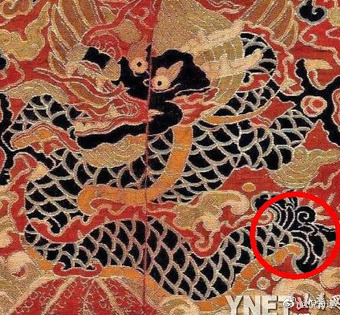
The prototype of the Feiyu(飛魚/Flying fish) is the 文鳐鱼(a legendary fish with wings) in the "山海经/Classic of Mountains and Seas", which evolved into a python-shaped flying fish in the late Ming Dynasty. ↓文鳐鱼(a legendary fish with wings) in the"山海经/Classic of Mountains and Seas"
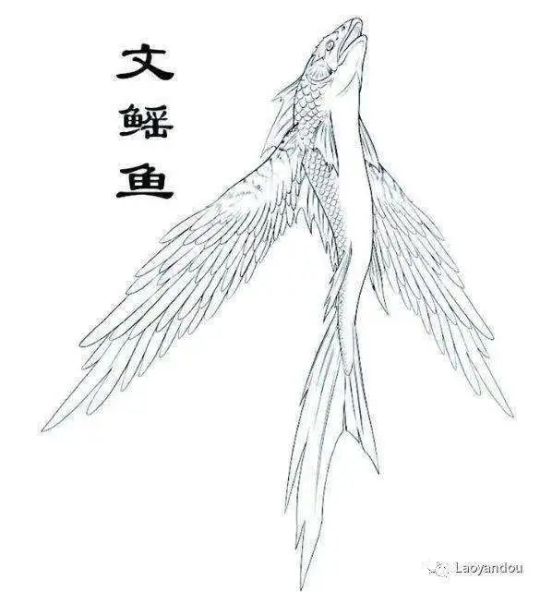
The image of the flying fish in the Ming Dynasty has two horns on the dragon's head and no wings on the fins, retaining the characteristic of the rolled tail.
Feiyu(飛魚/Flying fish) robe are generally rewarded to meritorious officials of the second rank or above,High-ranking eunuchs lead, and Embroidered Uniform Guard(錦衣衛). However, not all Embroidered Uniform Guard(錦衣衛) are eligible to wear flying fish robe, only the commanders of Embroidered Uniform Guard(錦衣衛), the emperor's personal school lieutenant and the guard of honor accompanying the emperor, these powerful confidantes of the emperor are eligible to wear them.
The Highest-Class is Python robe(蟒服):
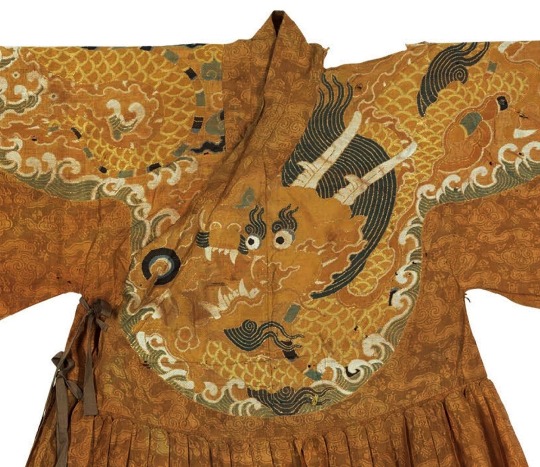
The highest level of <赐服/Cì fú>in the Ming Dynasty was python robe(蟒服), second only to the dragon robe worn by the emperor. The python pattern is very similar to the dragon pattern, the only difference is that the dragon has five claws and the python has four claws. Python robe(蟒服) are generally only awarded to 司礼监's eunuchs, ministers of the cabinet(内阁辅政大臣), ministers and counselors of the Ministry of War(兵部尚书参赞), and princes and heads of foreign vassals. Adding a Python robe(蟒服) represents prosperity and wealth. A jade belt is required to wear the python robe(蟒服), and there are two types: sitting python(坐蟒) and moving python(行蟒). In terms of dignity, sitting pythons are higher rank than walking pythons.
※司礼监:is an eunuch in charge of the emperor's documents, seals, palace etiquette, etc.
————————
📷Photo:@realyn
💄Stylist:@仰望的花鼻子
👗Hanfu:@青山有幸
🔗Weibo:https://weibo.com/5541803701/N77vXcOBE
————————
#chinese hanfu#Ming Dynasty(1368-1644 AD)#赐服/Cì fú#python robe(蟒服)#Feiyu(飛魚/Flying fish) robe#Qilin robe(麒麟服)#DouNiu robe(斗牛服)#man hanfu#hanfu#hanfu accessories#hanfu_challenge#chinese traditional clothing#china#chinese#chinese hanfu relics#hanfu history#china history#chinese fashion#imperial china#chinese style#漢服#汉服#中華風
244 notes
·
View notes
Text
[Hanfu · 漢服]Chinese Eastern Han Dynasty (25–220 A.D.) Hanfu-Military Officials Hanfu Based On Han Dynasty Relics
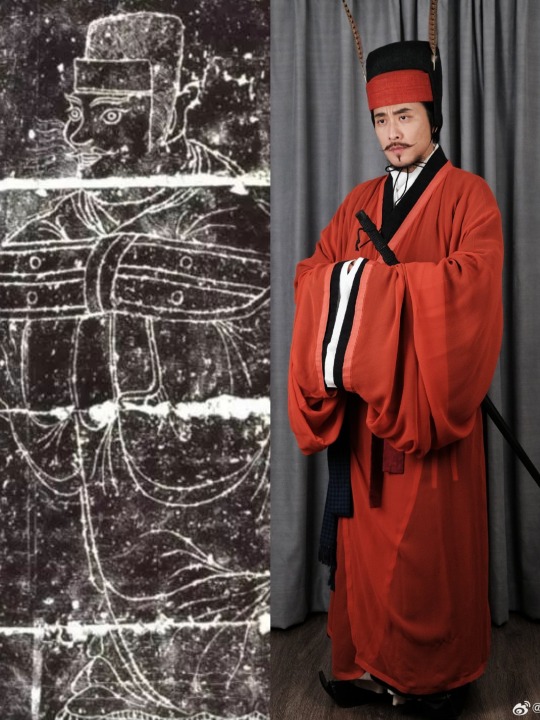
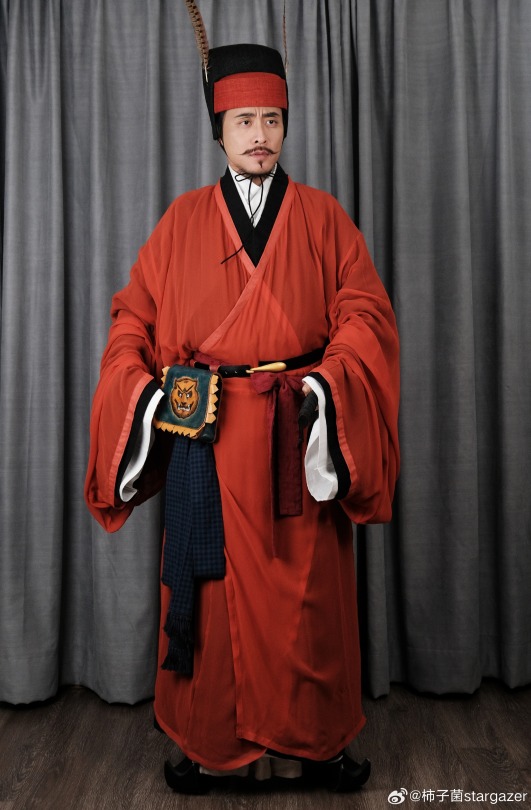
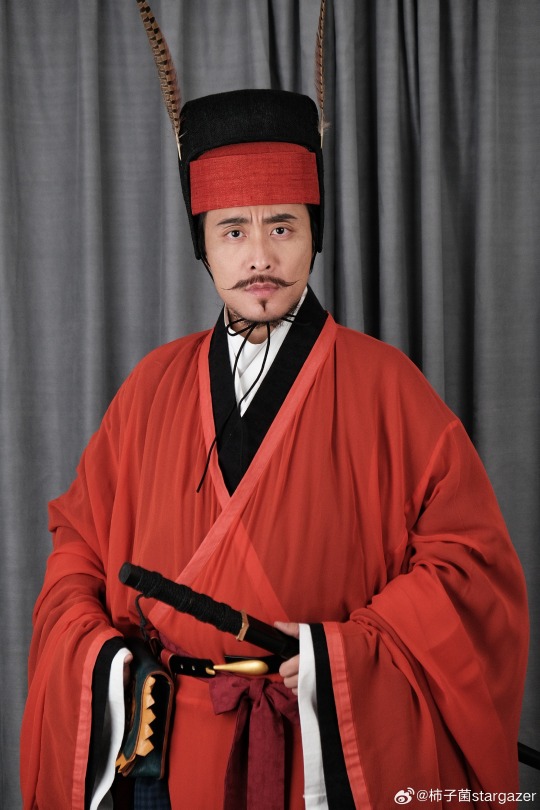

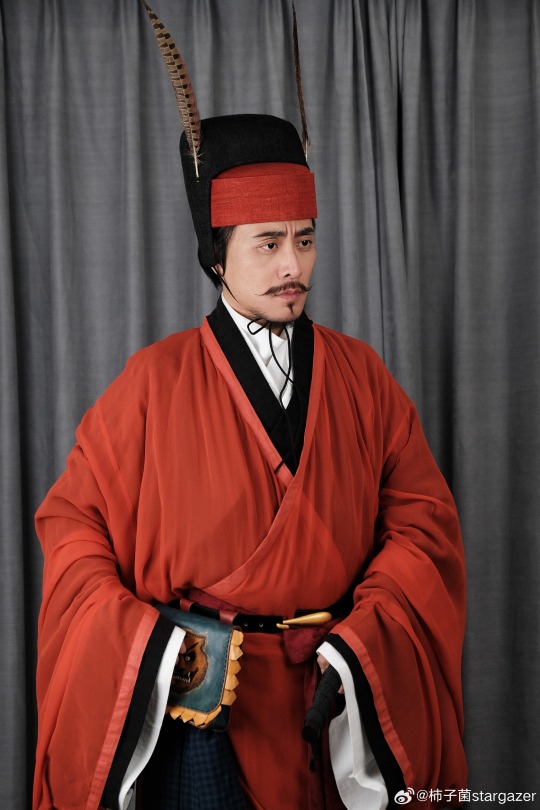
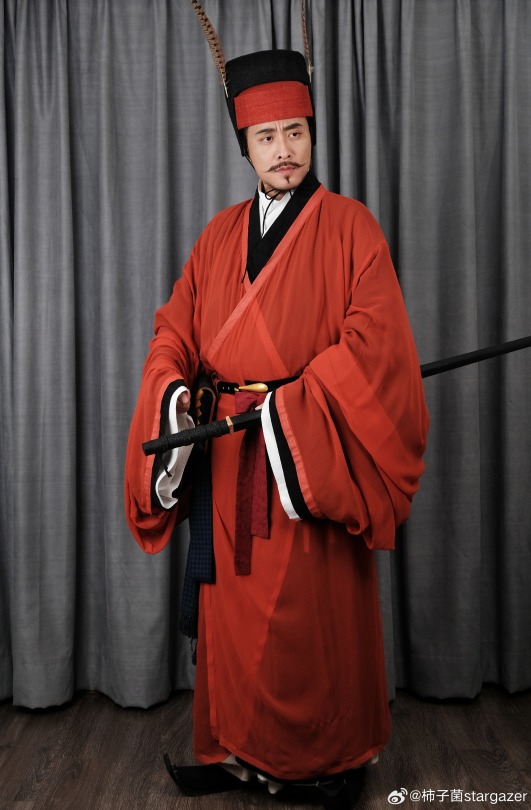

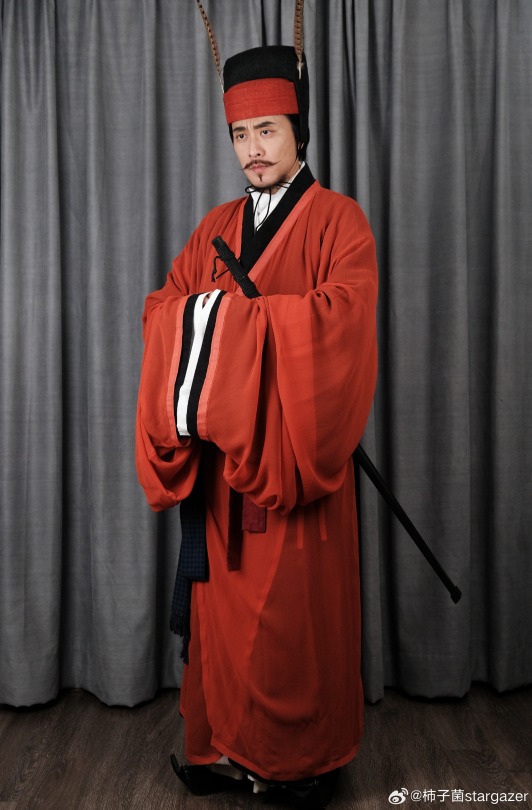
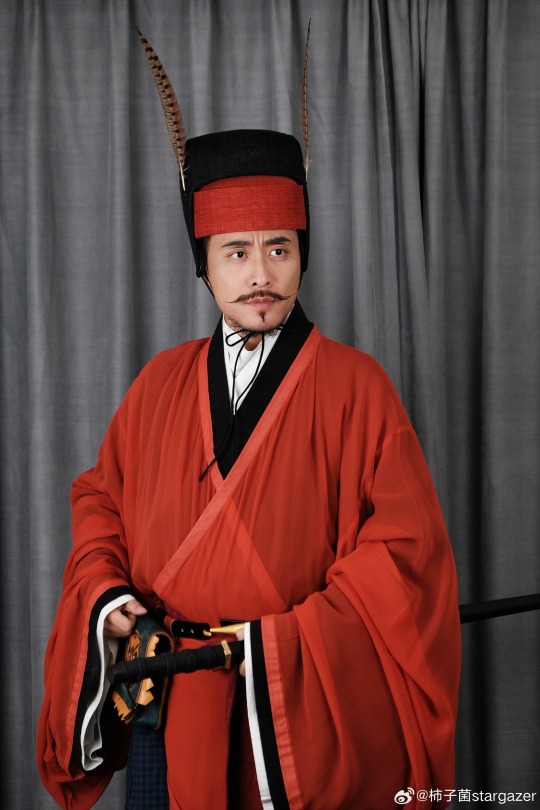
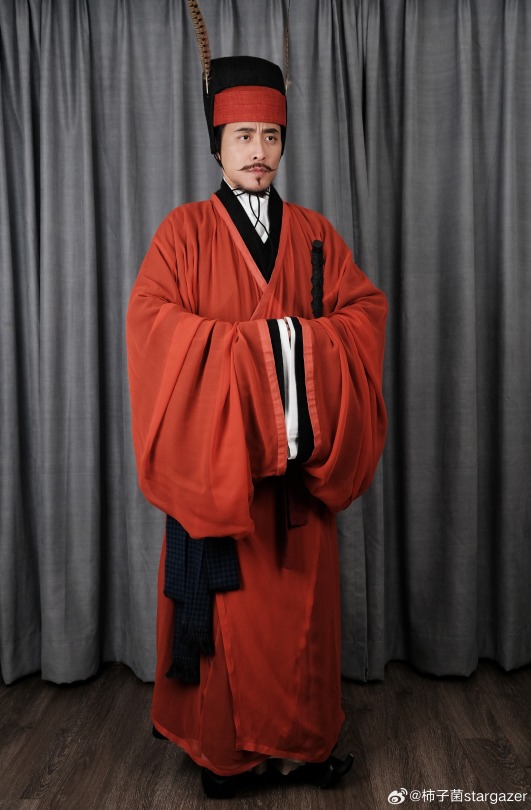
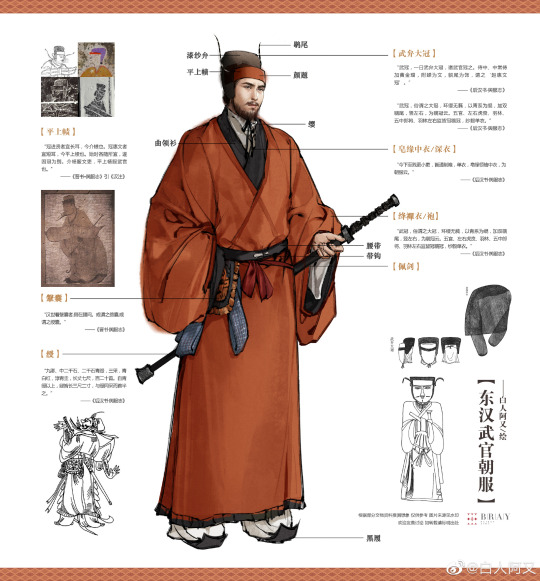
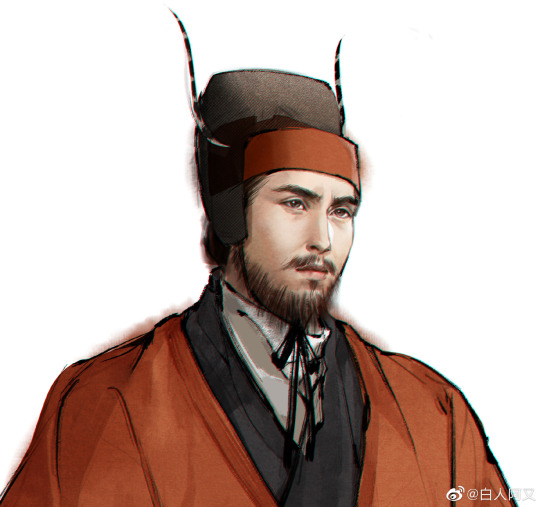
【Historical Reference Artifacts】:
Refer to the picture below to distinguish between 【civil officials(Black)】 and 【military officials(Red)】 in the Eastern Han Dynasty
Civil Officials[Black]:Murals from the Zhucun tomb in Luoyang, Henan/ 東漢晚期河南洛陽朱村墓室壁畫
For information about Eastern Han Dynasty civil servants, please refer to the following link: https://chinesehanfu.tumblr.com/post/718472603917025280/reference-artifacts-chinese-western-han
Military Officials[Red]:Portrait bricks in Beizhai, Yinan, Shandong/山東沂南北寨東漢畫像磚
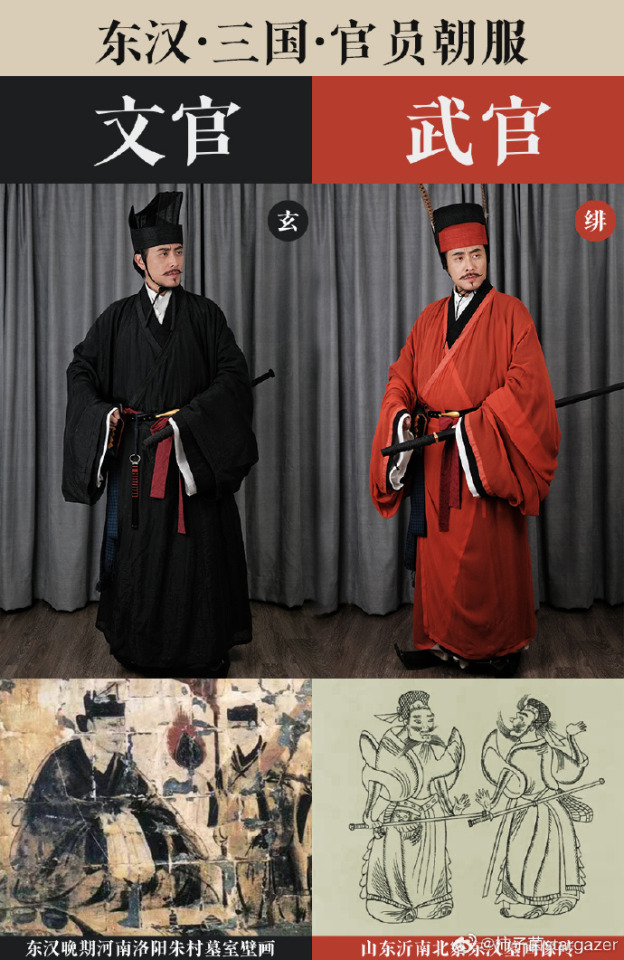
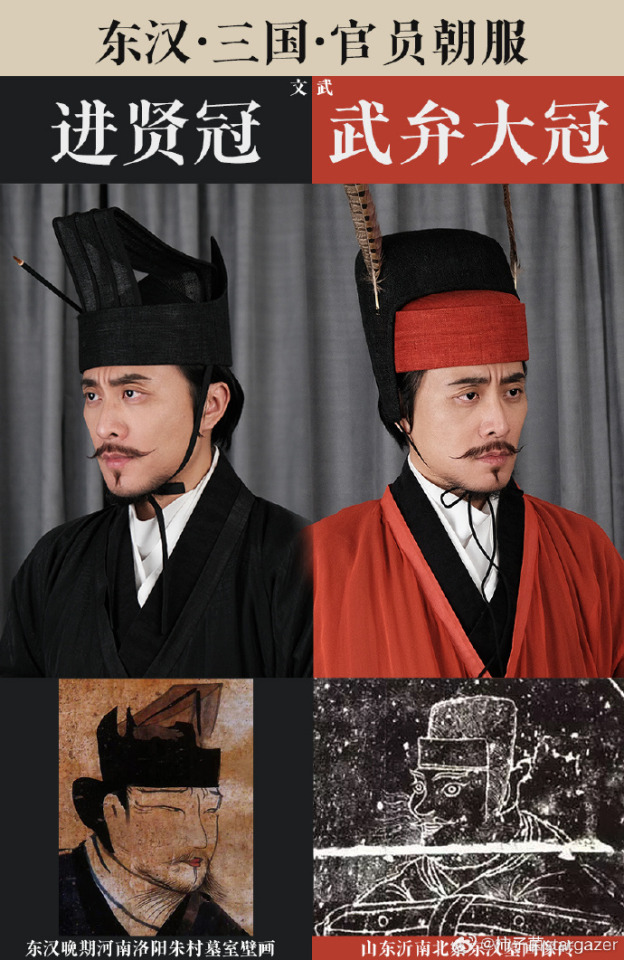
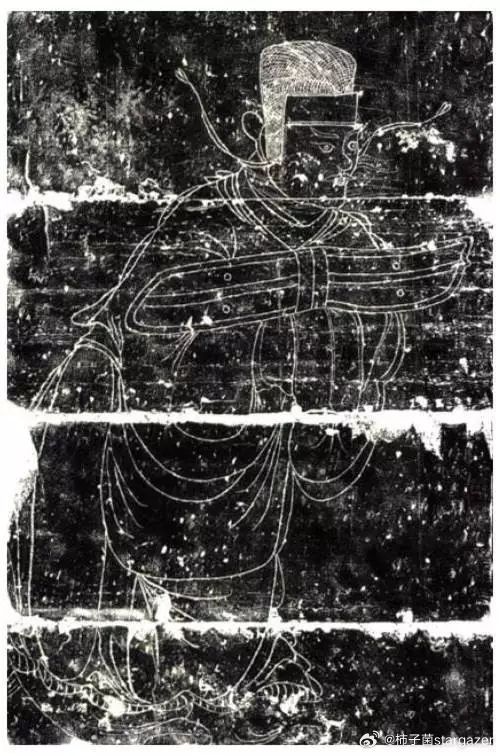
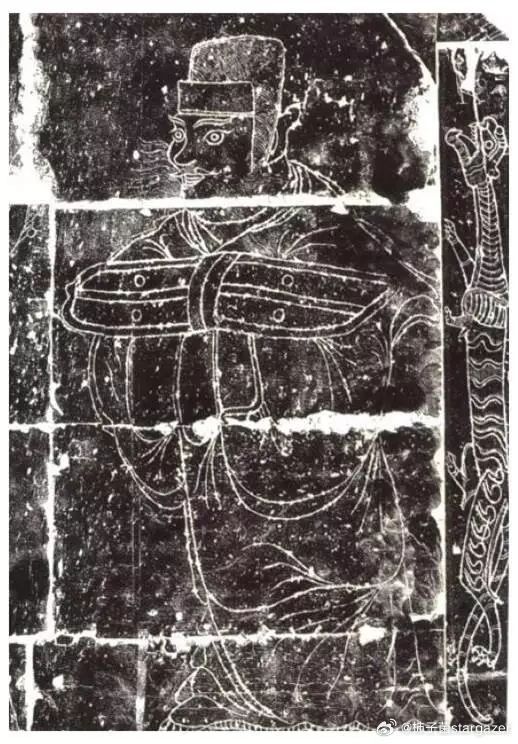
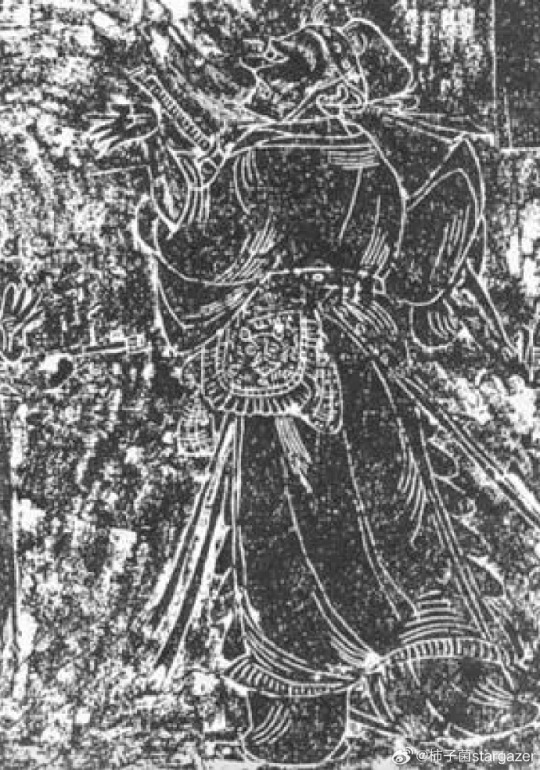
Eastern Han Dynasty- Stone figure holding a shield in the pavilion,Beijing Stone Carving Museum.
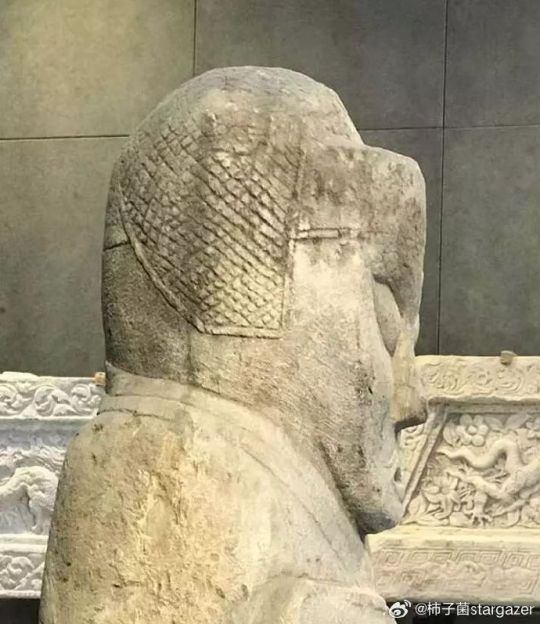
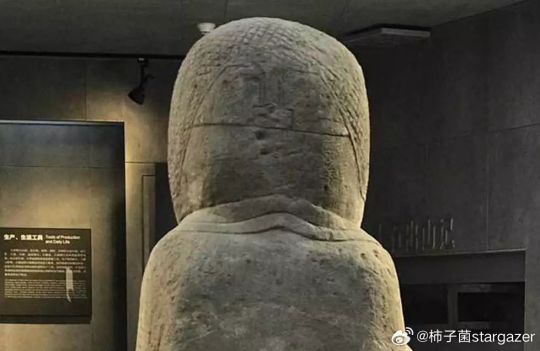
【History Note】
【武弁大冠Wubian Daguan/Military Officials Crown】
Also known as Wu Guan, He Guan, 鶡冠,鶡(pronounce:hé) is a warrior crown with "tail-feather of a brown longtailed pheasant". It was the crown of warriors from the Qin and Han Dynasties to the Sui and Tang Dynasties. During the development process, the shape of the crown changed with different periods.
※鶡(pronounce:hé):Crossoptilon mantchuricum,a bird that resembles a pheasant and is good at fighting,is one of the rare endemic animals of China
A military officials crown was unearthed from Xinmang Tomb No. 62, Mozuizi, Wuwei, Gansu Province. The crown was wrapped with thin bamboo tendons, supported by a bamboo ring on the top of the head, and lined with a bow. It is a complete example of what a military officials wore.
________________
🙋♂️Model & Recreation Work:@柿子菌stargazer
📸Photo: @张宇莹-小花
🎨Illustration Artist:@白人阿又
🔗Weibo:https://weibo.com/1812652835/NtJb89gIi
________________
#chinese hanfu#Eastern Han Dynasty (25–220 A.D.)#Military Officials#hanfu#hanfu accessories#hanfu_challenge#chinese traditional clothing#china#chinese#hanfu history#china history#historical fashion#chinese history#hanfu man#hanfu illustration#chinese fashion#漢服#汉服#chinese style
120 notes
·
View notes
Text
[Hanfu・漢服]Chinese Wei & Jin Dynasties-Northern and Southern Dynasties Traditional Hanfu Based On Relics
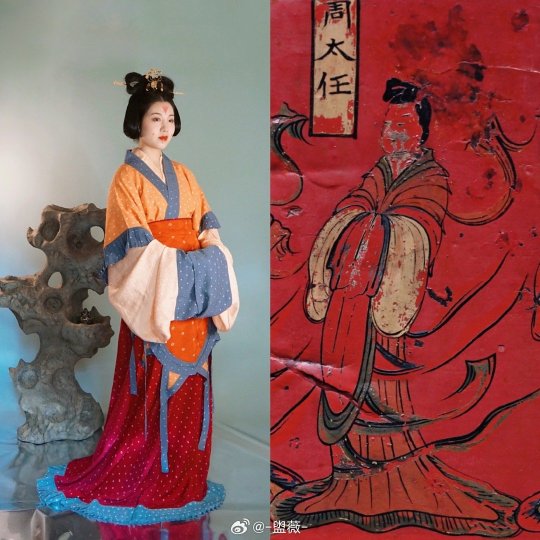
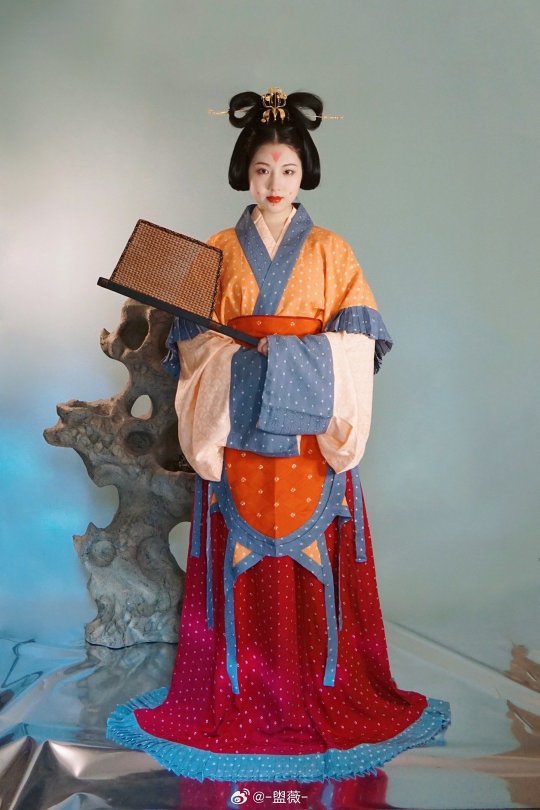
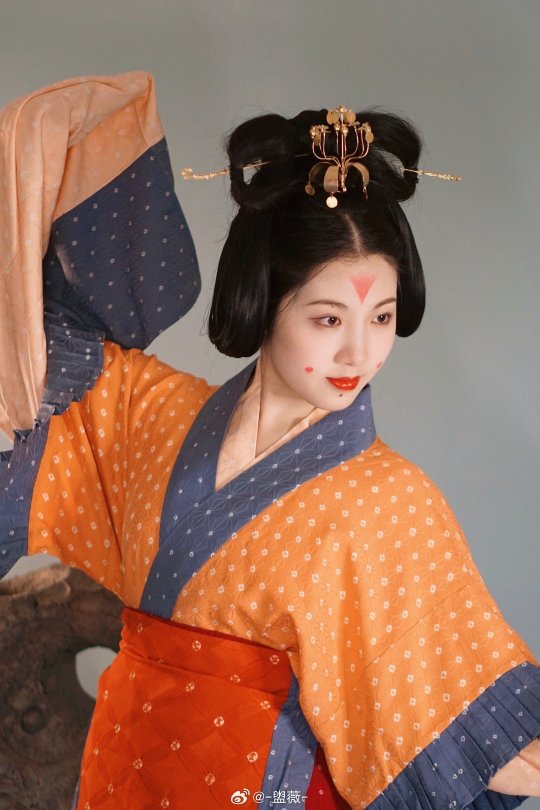
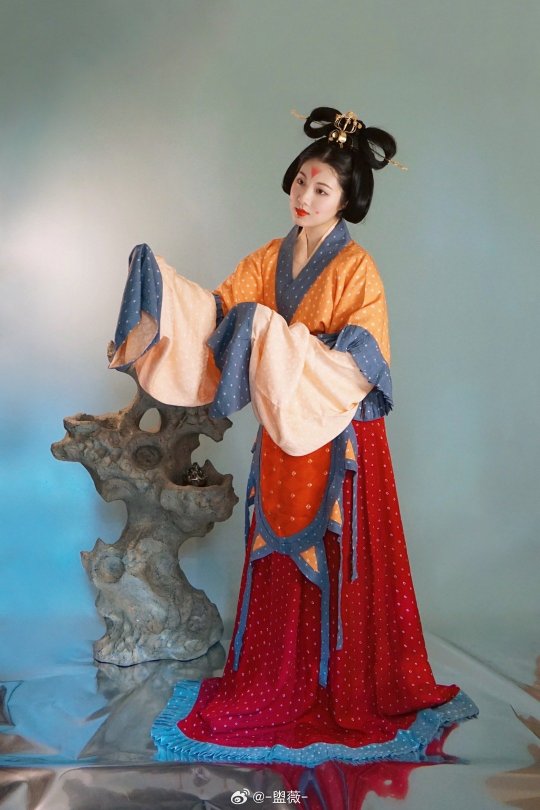
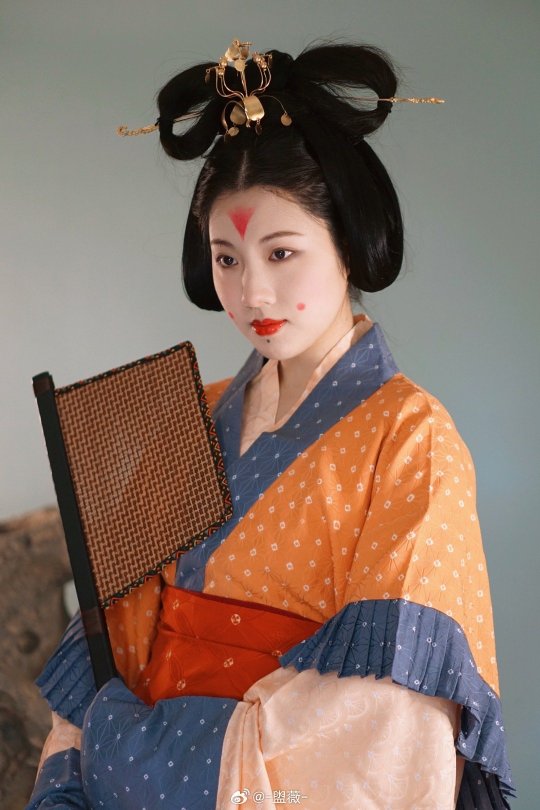
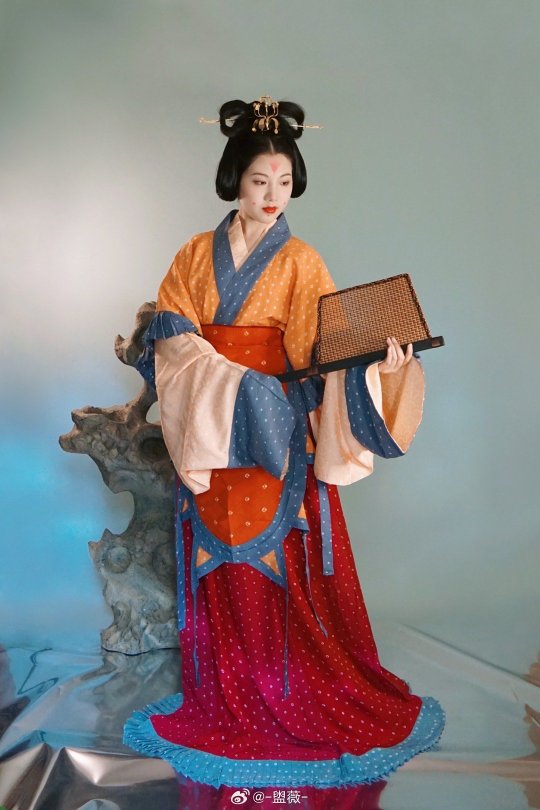
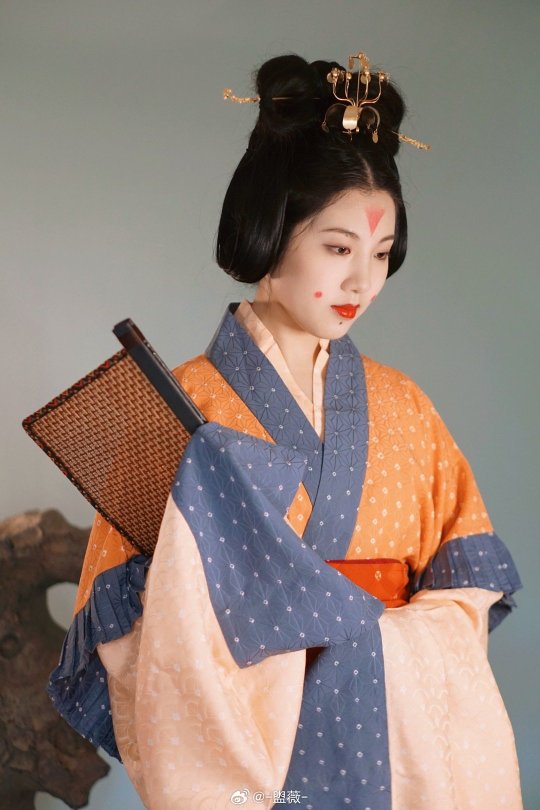
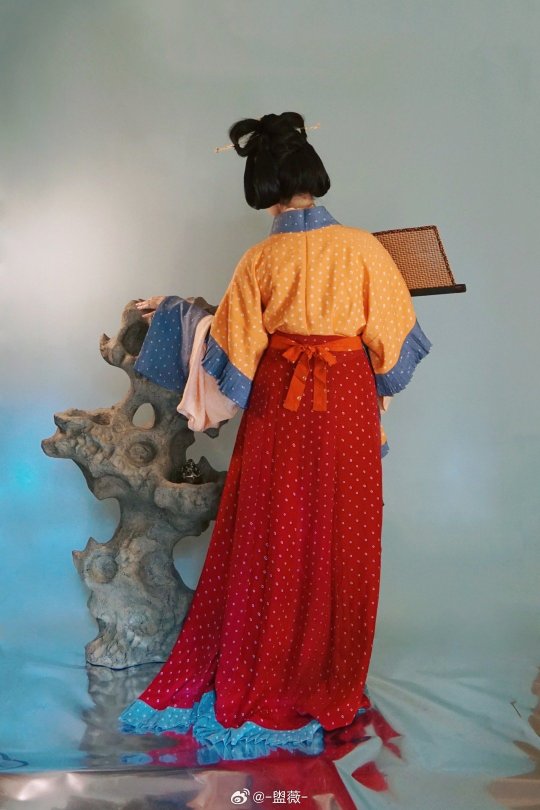
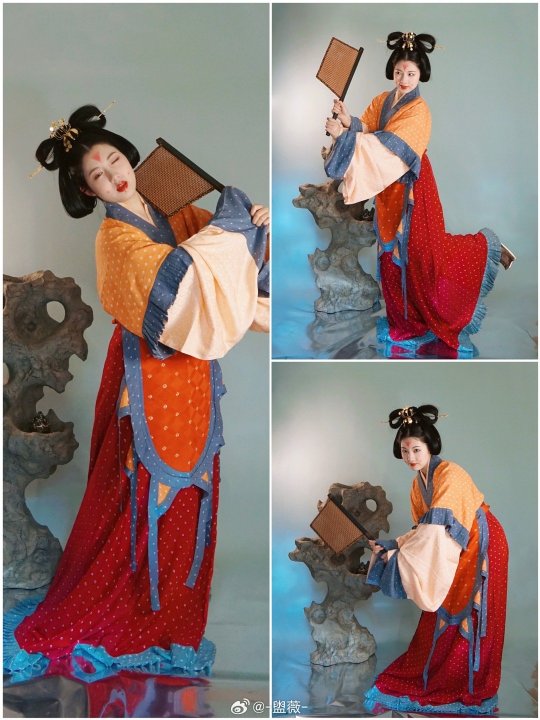
【Historical Reference Artifacts】:
Northern Wei Dynasty
<Lacquer Screen with Paintings of Colored Figures>
Unearthed from the tomb of Sima Jinlong (司馬金龍:Descendants of the Sima clan of the Jin Dynasty),Datong Museum, Datong, Shanxi, China.
It mainly depicts the stories of Emperor Shun(舜)'s observance of filial piety, the three mothers of the Zhou dynasty royal family, 鲁师春姜(Lu Shichunjiang married off his daughter and sent her to her husband's family three times, but was driven back to her parents' home three times), and 班姬辞辇. The story comes from "Biographies of Exemplary Women/列女传". "Biographies of Exemplary Women" is a book introducing the behavior of women in ancient China.
※鲁师春姜:When Lu Shichunjiang married off his daughter, he sent his daughter to her husband's family three times, and was driven back to her parents' home three times because her daughter often looked down on and insulted people in her husband's family.
※班姬辞辇:In order to be inseparable from Ban Jieyu(班婕妤) at all times, Emperor Cheng of the Han Dynasty specially ordered someone to build a larger chariot. However, when Emperor Cheng ordered her to travel with the chariot together, this was a great thing that the palace maids dreamed of, but unexpectedly, Ban Jieyu rejected.She tactfully said to Emperor Cheng: "Appreciating the paintings left in ancient times, a good kings are always accompanied by ministers, and only the kings of subjugated countries sit with their beloved concubines. If you want me to go in and out with you today, aren't you the same as the king who subjugated his country?”
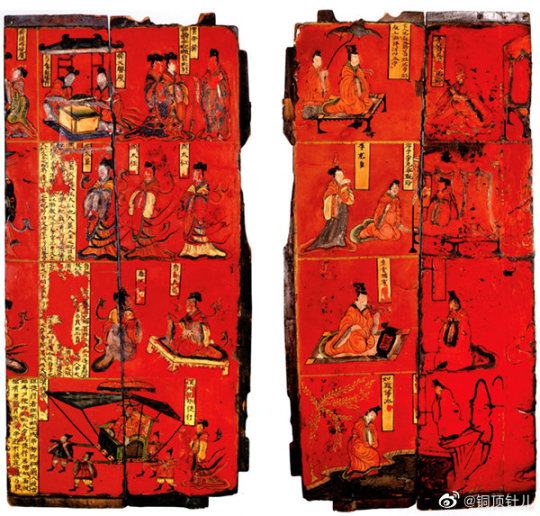
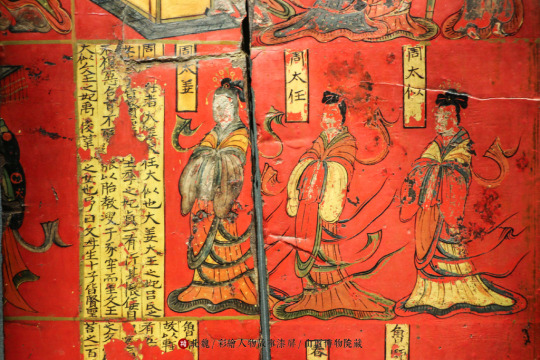
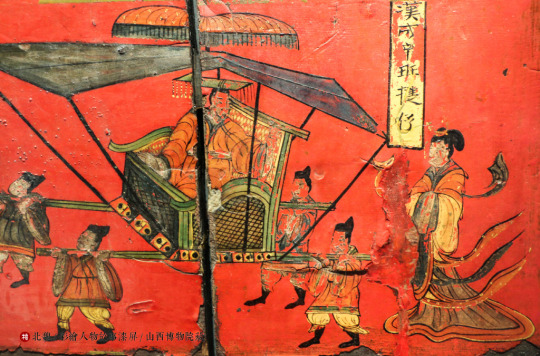
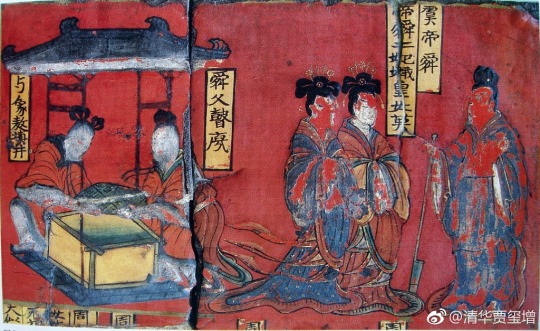
————————
📸Recreation Work &🧚🏻 Model :@-盥薇-
💎hairpin:@松花酿酒首饰铺
🔗 Weibo:https://weibo.com/3942003133/NuvvKrUKG
————————
#chinese hanfu#Wei & Jin Dynasties-Northern and Southern Dynasties#hanfu#hanfu accessories#hanfu_challenge#chinese traditional clothing#chinese#china
133 notes
·
View notes
Photo
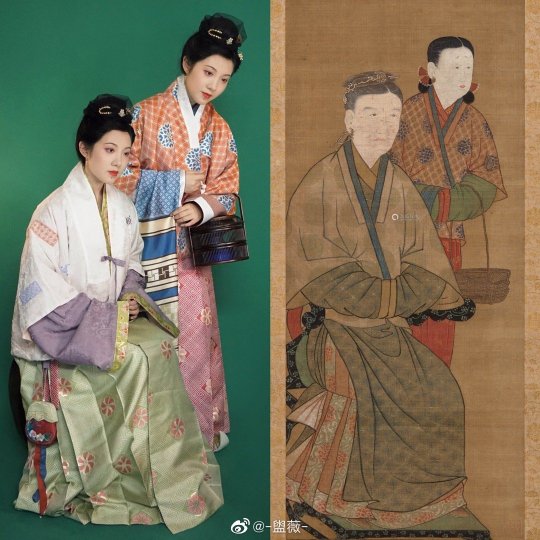

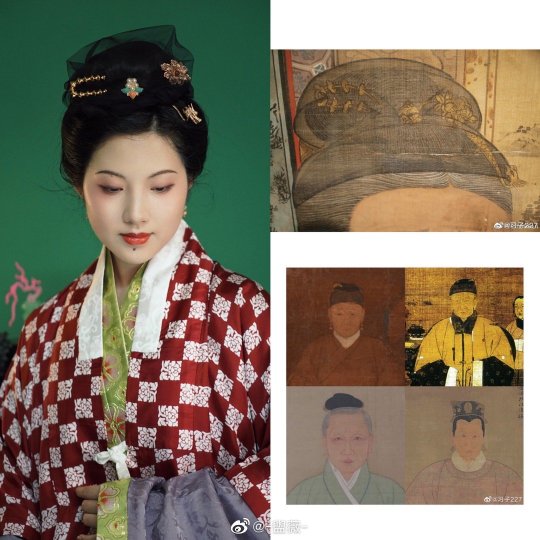
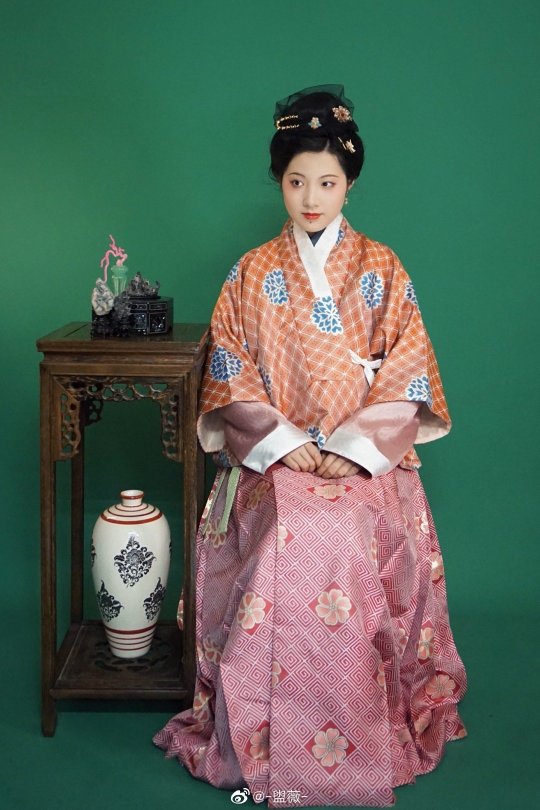
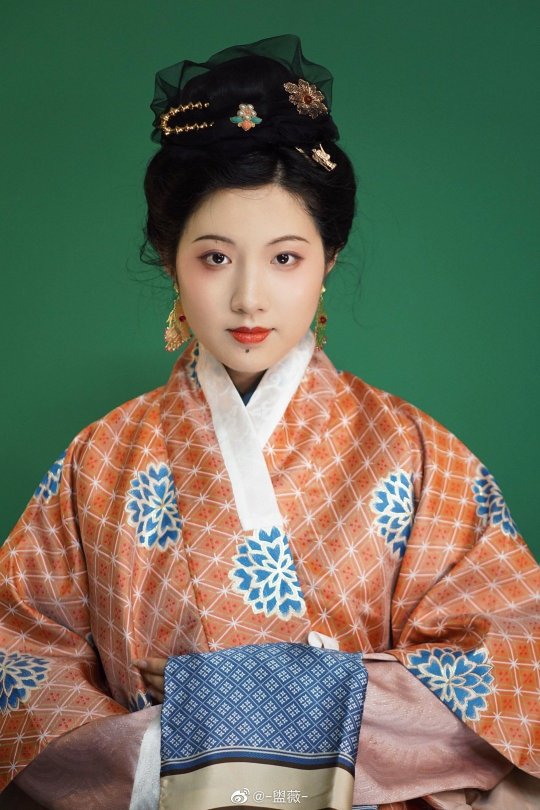
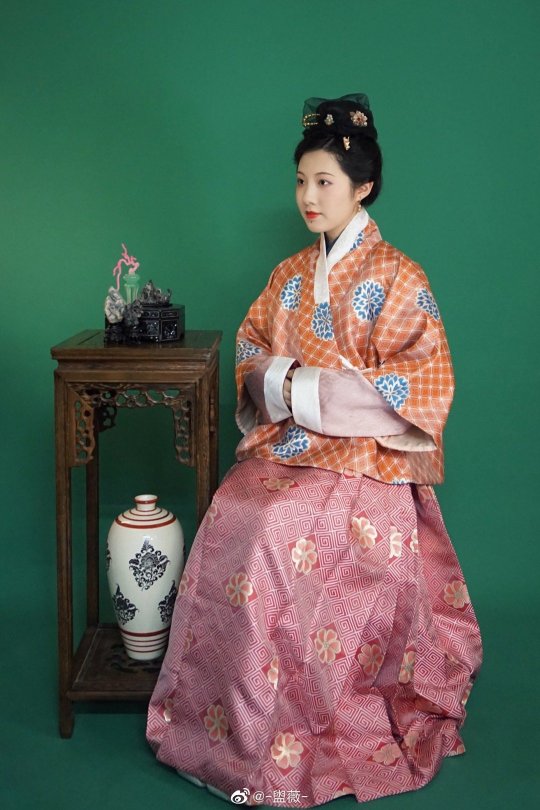
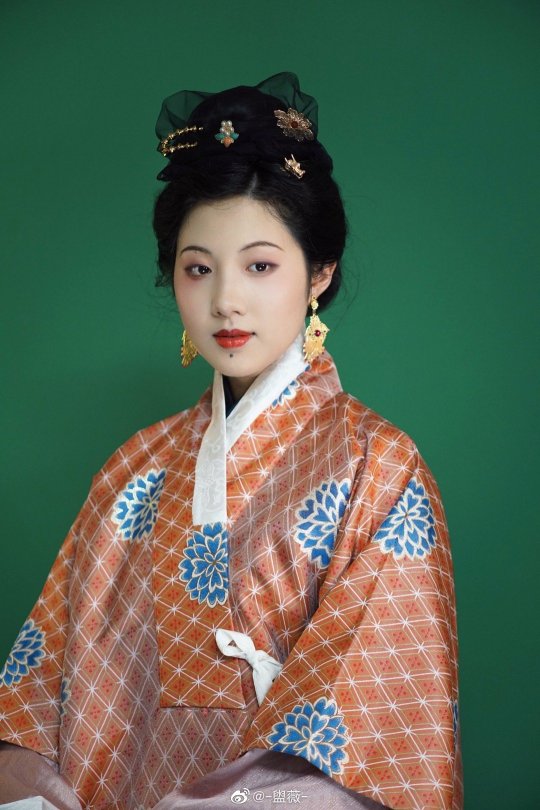
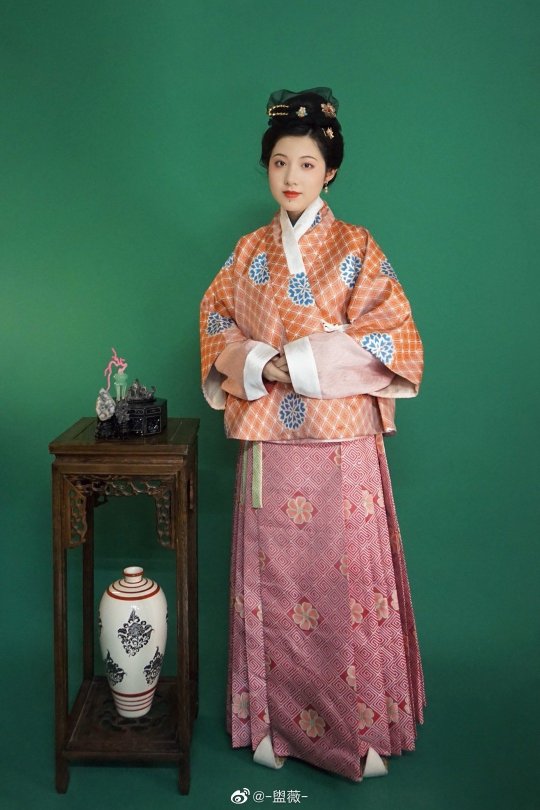
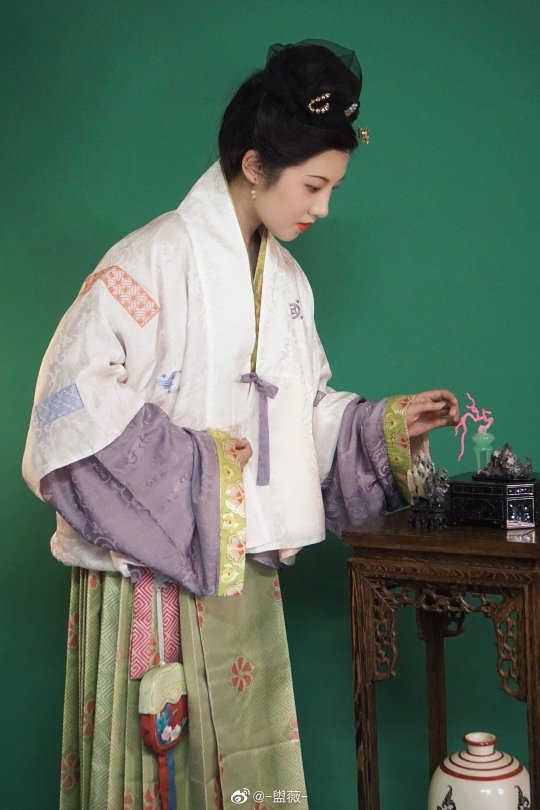
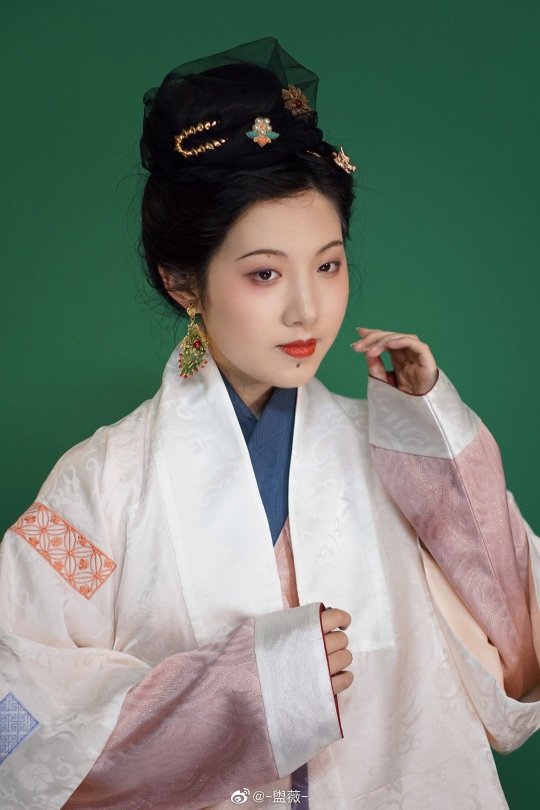

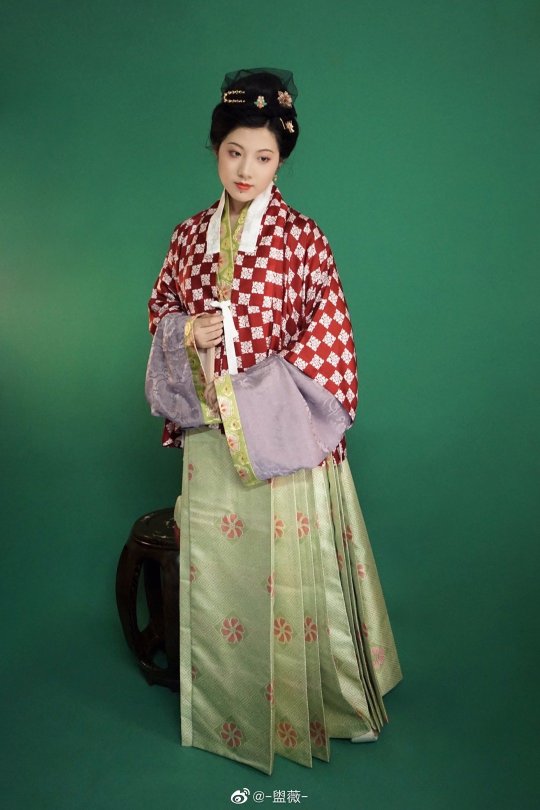
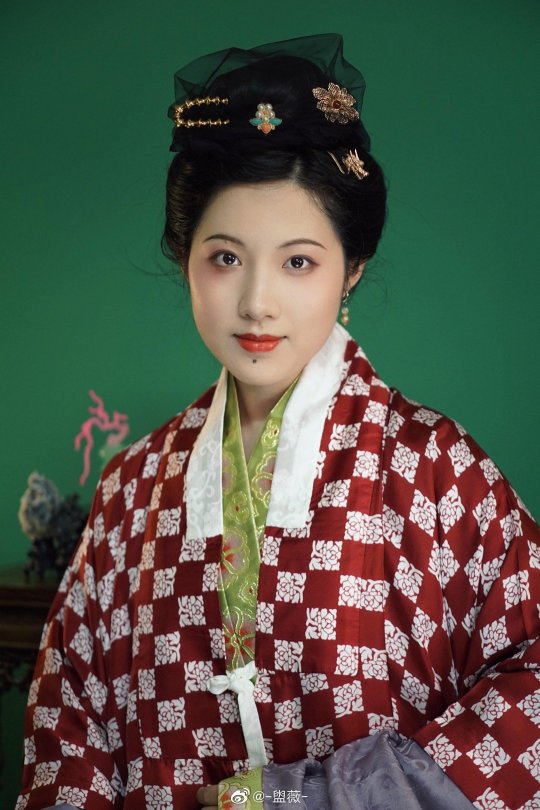
【Historical Reference Artifacts】:
Portraits and Mural of Women in the Late Yuan-Early Ming Dynasties

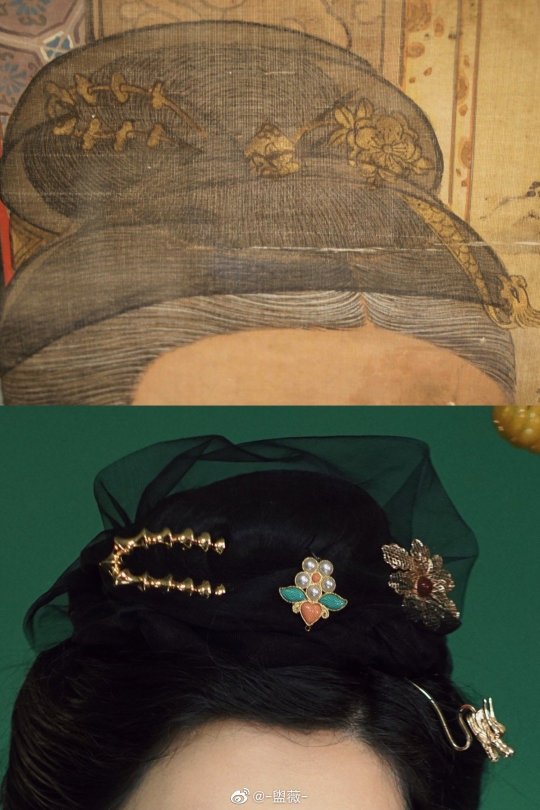
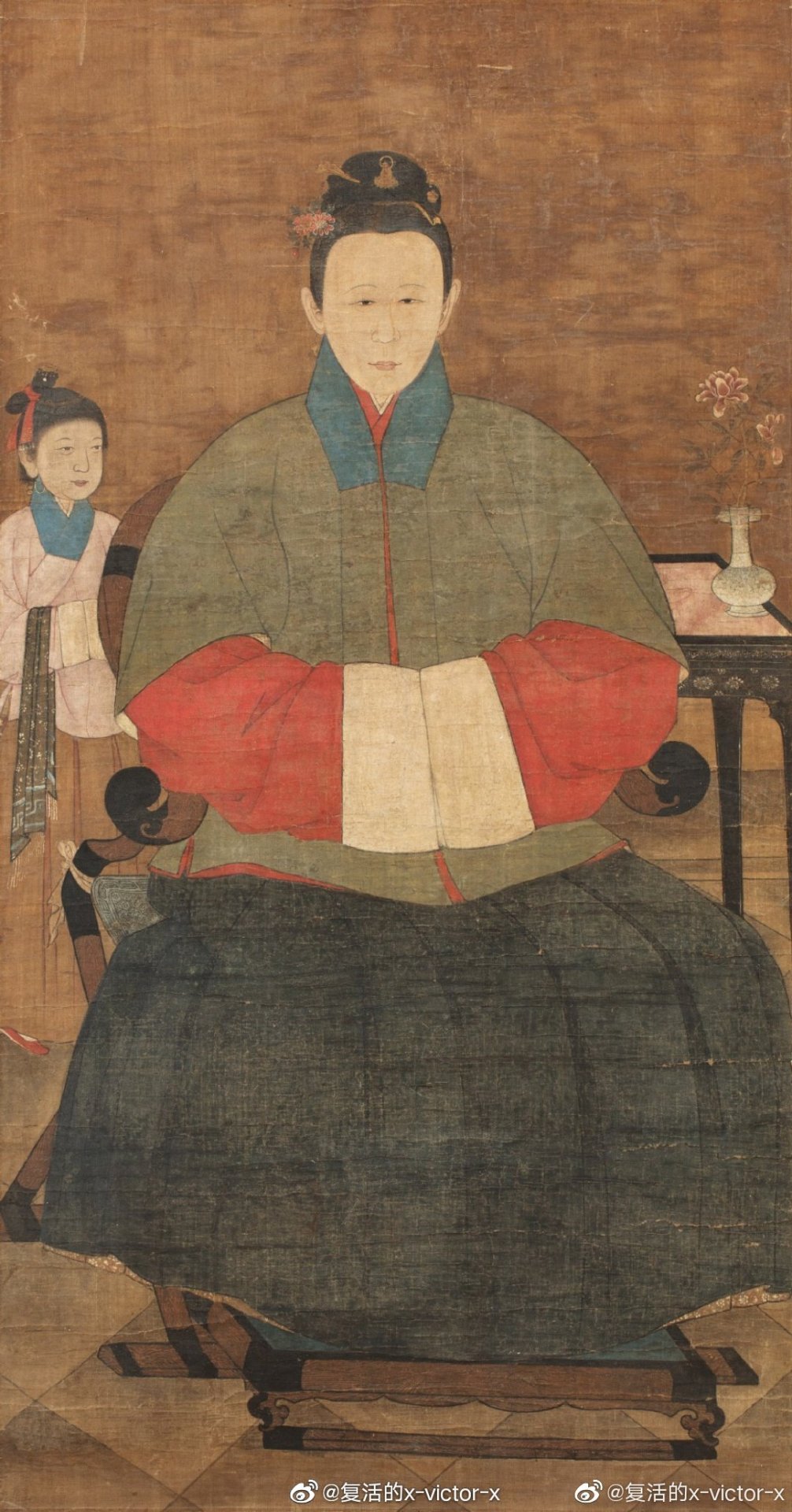
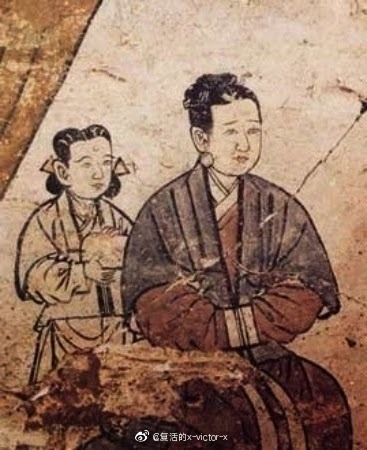
Chinese Ming Dynasty Yongle period(1360–1424) Hanfu Relic: 长袖夹衣&素纱单裙
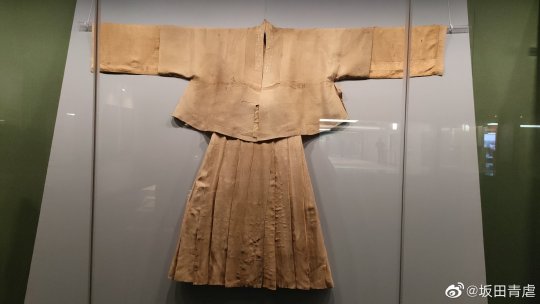
Yuan Dynasty Clothing Relics: 妆花凤戏牡丹纹绫夹衫,Unearthed from the tomb of Wang Shixian(汪世显)'s family in Zhang County,Gansu Provincial Museum Collection
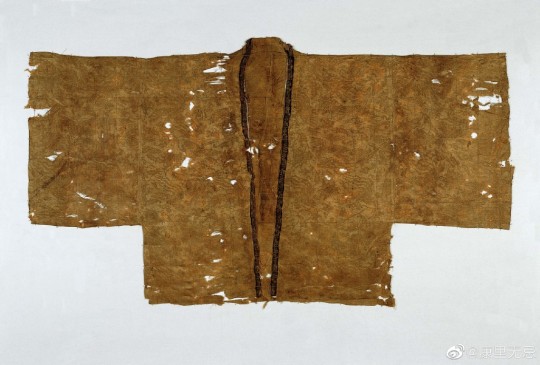
Yuan Dynasty Clothing Relics: 印金团花图案夹衫
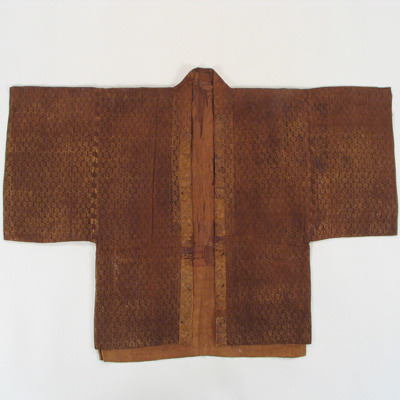
[Hanfu · 漢服]China Late Yuan to Early Ming Dynasties Traditional Clothing Hanfu Refer to Portraits and Mural of Women in the Late Yuan-Early Ming Dynasties
Typical styles of Han ethnic Women in the Late Yuan and Early Ming Dynasties
And it seen that the jacket has a certain connection with the jacket of the Southern Song Dynasty to some extent as blow:
Cotton jacket unearthed from the tomb of Huang Sheng(黄昇) in the Southern Song Dynasty in Fuzhou
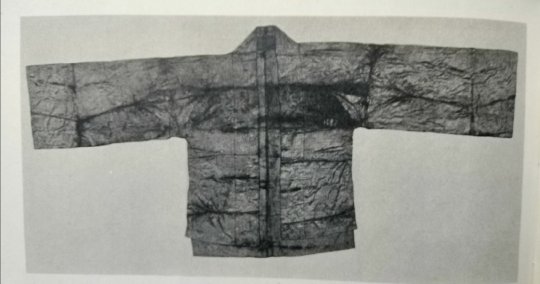
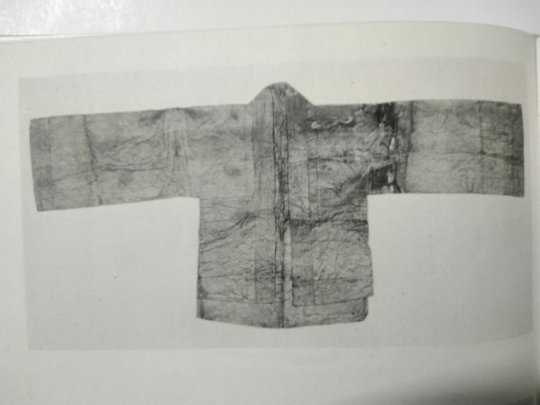
Chinese Southern Song Dynasty Painting<仙馆秾花图>,Collection of National Palace Museum, Taipei
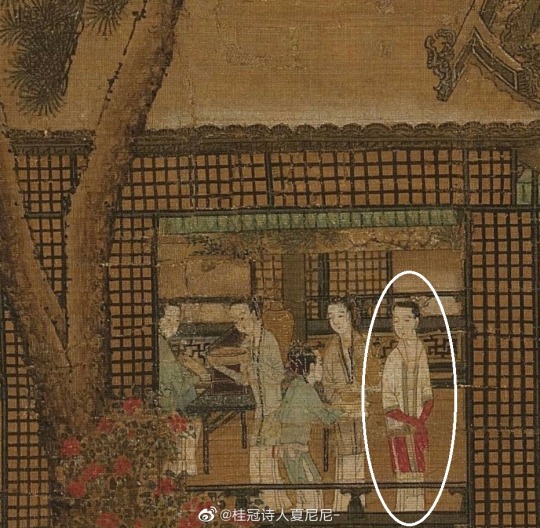
_______
📸Recreation Work: @-盥薇-
👗Hanfu: @YUNJIN云今
💎Earring:@江琛复古生活馆
🔗Weibo:https://weibo.com/3942003133/N6t86nHOM
_______
#chinese hanfu#Late Yuan and early Ming Dynasty#southern song dynasty#Yuan Dynasty#hanfu#chinese fashion#China History#historical fashion#historical hairstyles#hanfu accessories#-盥薇-#YUNJIN云今#@江琛复古生活馆#china
218 notes
·
View notes
Photo
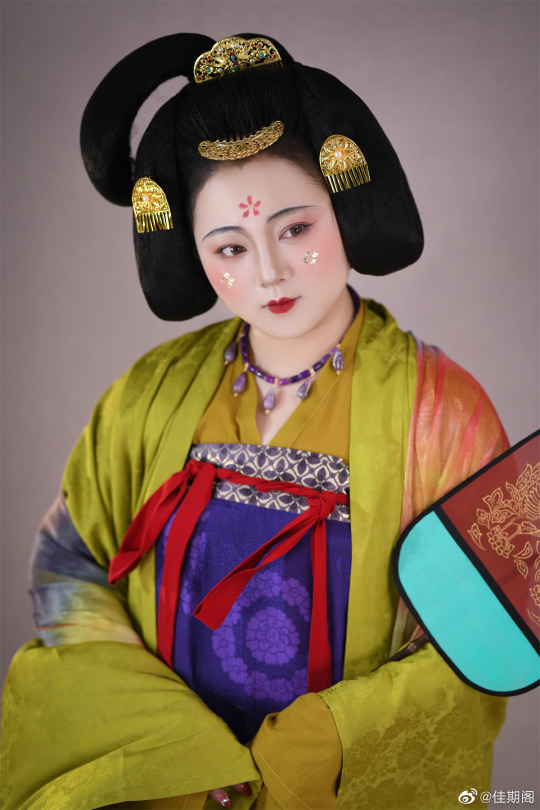
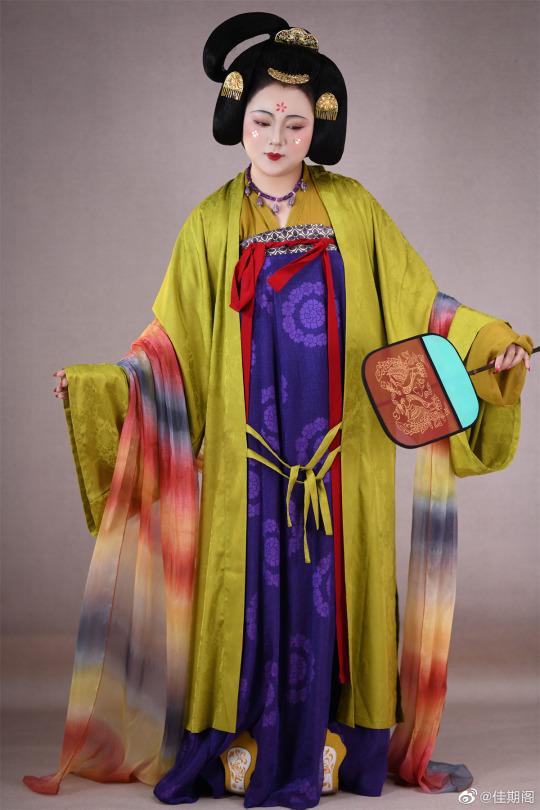
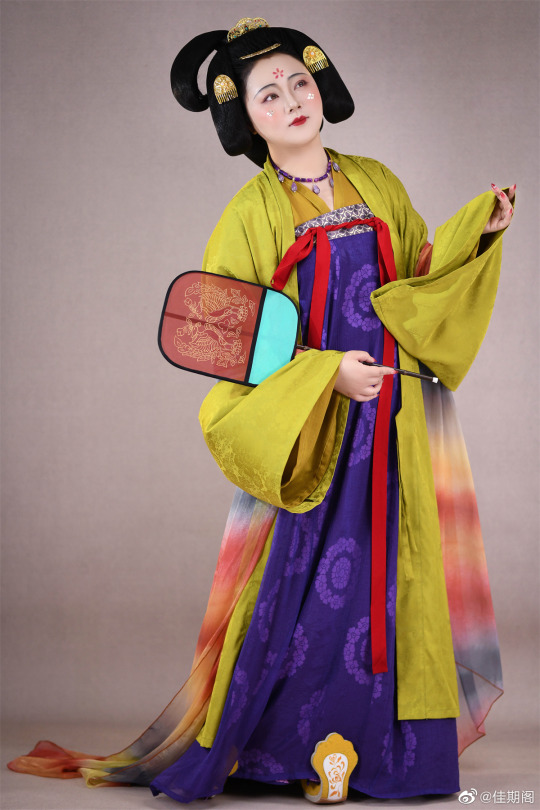

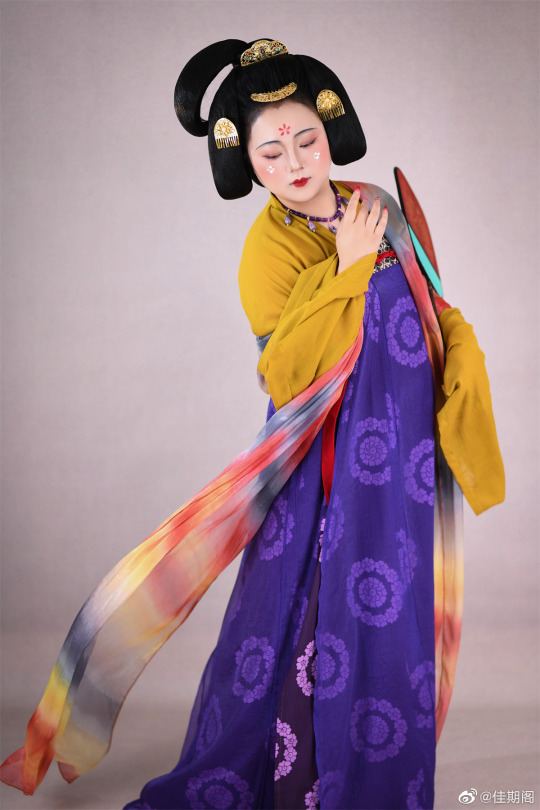
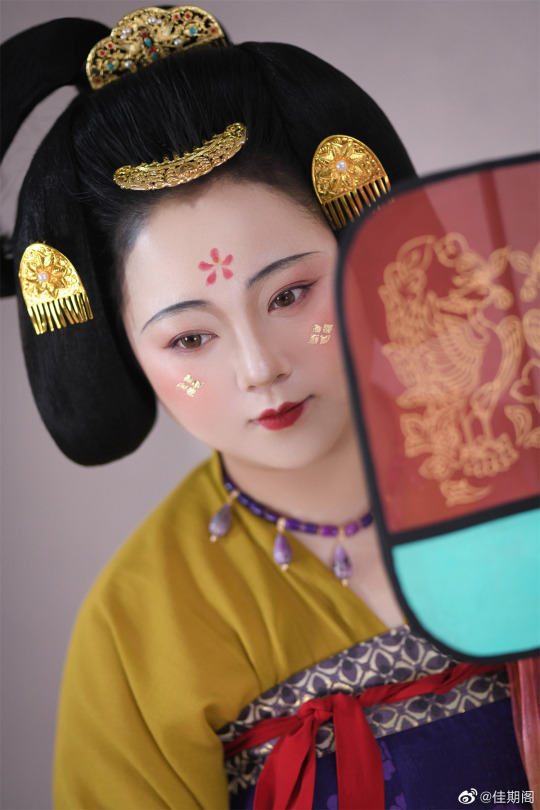
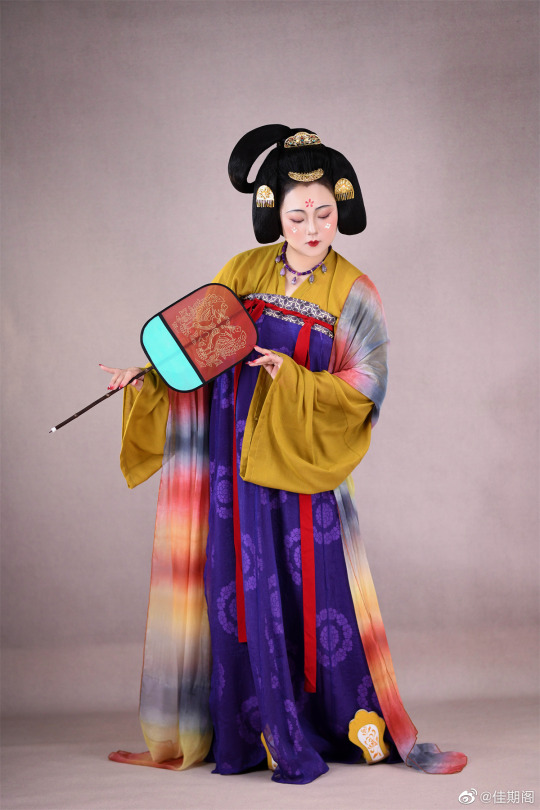
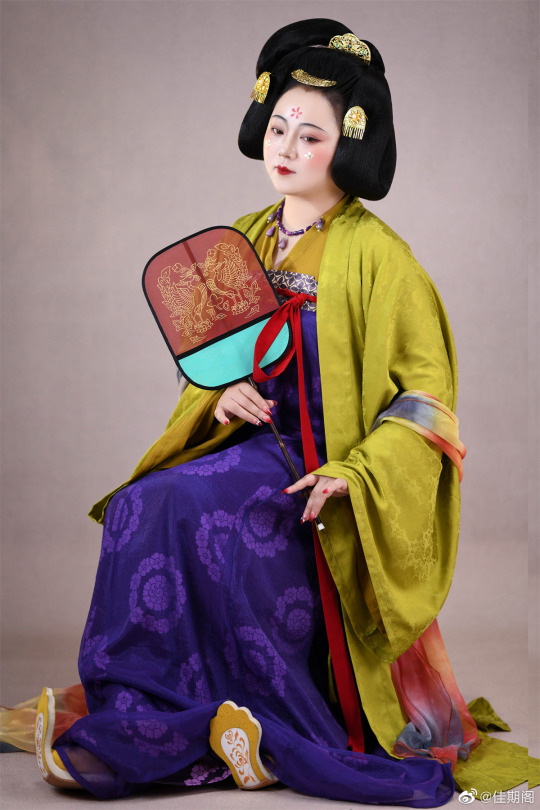
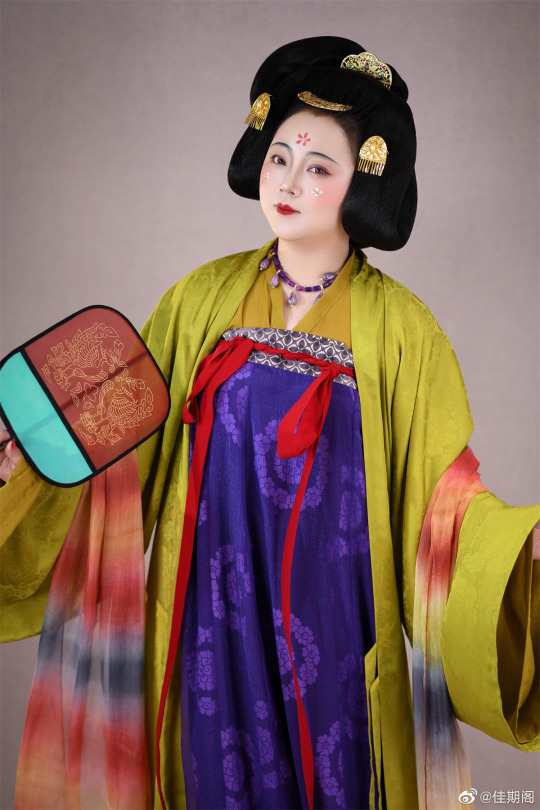
【Historical Reference Artifacts】:
Tang Dynasty Hanfu Relics Unearthed from the Underground Palace of Famen Temple
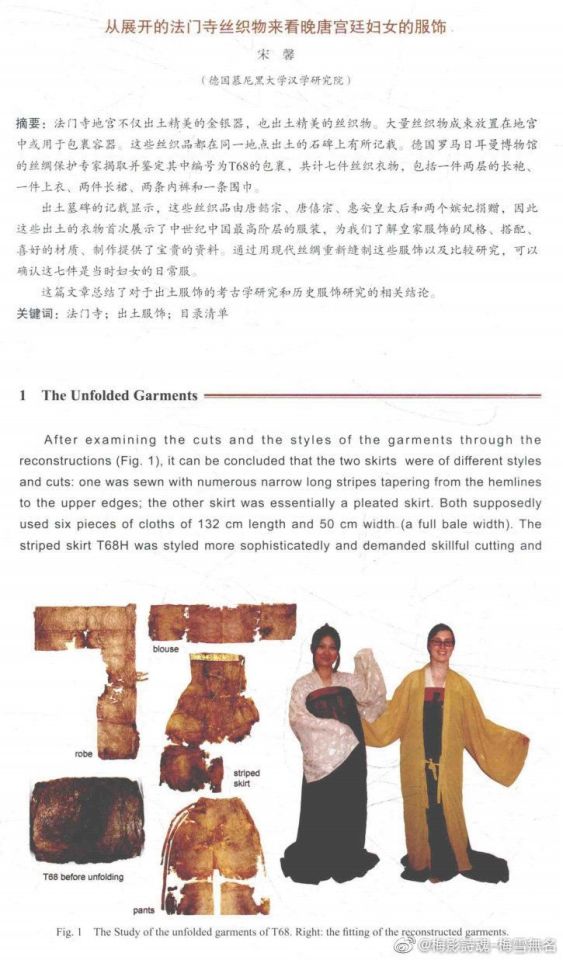
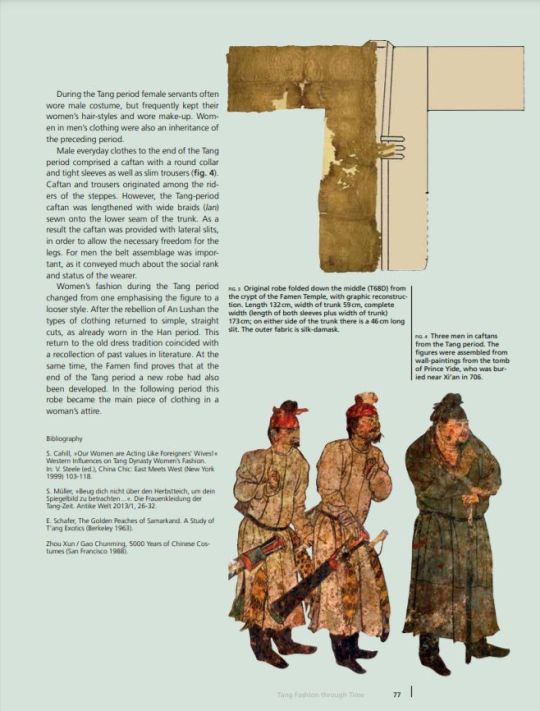
Tang Dynasty Hanfu Relics Unearthed from the Underground Palace of Famen Temple:直領對襟團窼紋長衫(袍)
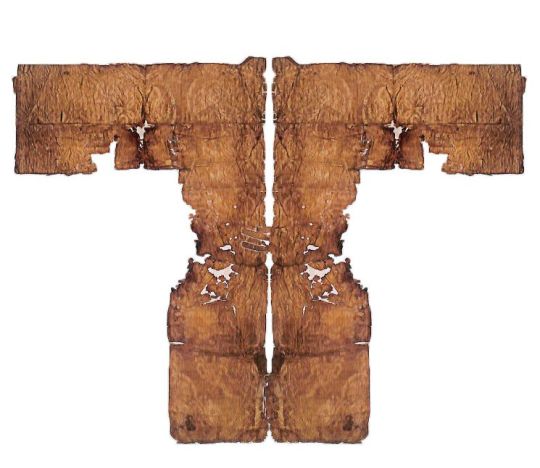
[Hanfu · 漢服]Chinese Tang Dynasty(618-907A.D)Traditional Clothing Hanfu Refer to the relics of Famen Temple
Late Tang Dynasty Period Noblewoman Attire
_______
👗Hanfu & Photo: @佳期閣
🔗Weibo:https://weibo.com/6614078088/N2FqMr2U6
🛍️ Tabao:https://item.taobao.com/item.htm?spm=a1z10.3-c.w4002-21517525888.12.3ed71c81WrejrM&id=722671302802
_______
#chinese hanfu#Tang Dynasty(618-907A.D)#hanfu history#hanfu accessories#hanfu#hanfu artifacts#chinese historical fashion#chinese historical makeup#chinese history#chinese style#chinese#chinese attire#chinese traditional clothing#chinese culture#直領對襟團窼紋長衫(袍)#Famen Temple#汉服#漢服#佳期閣#Late Tang Dynasty Period#chinese fashion#china
153 notes
·
View notes
Photo


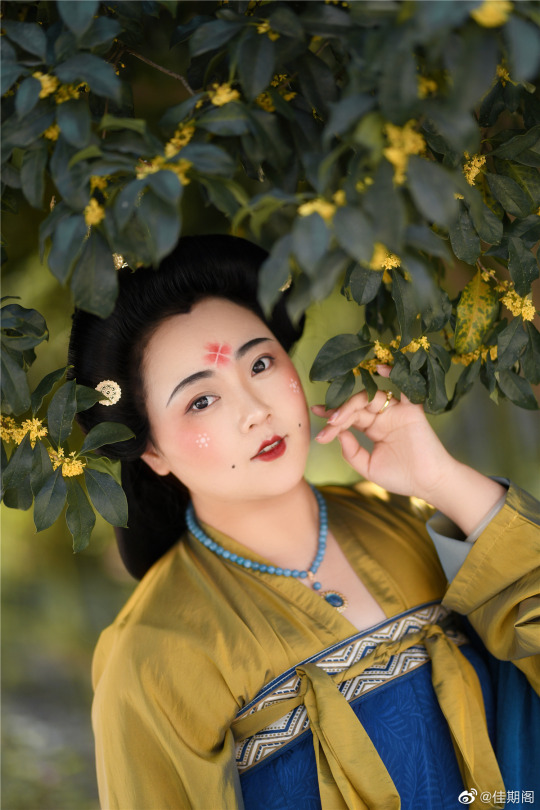
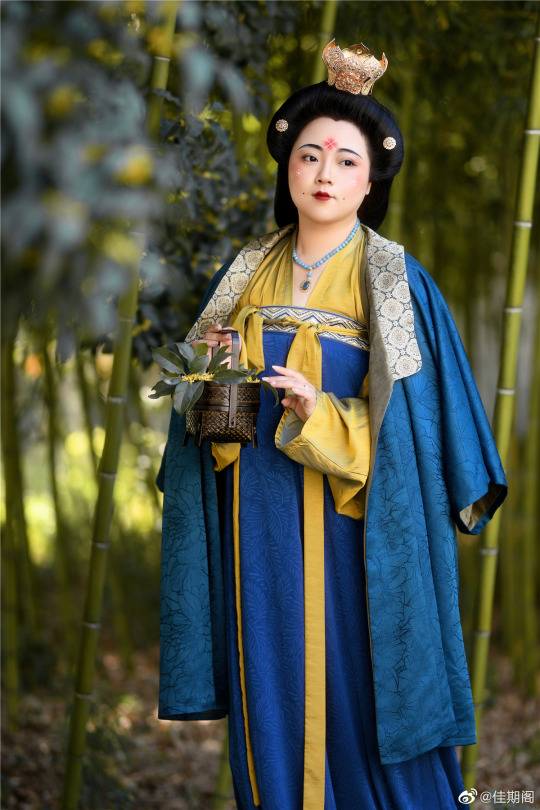




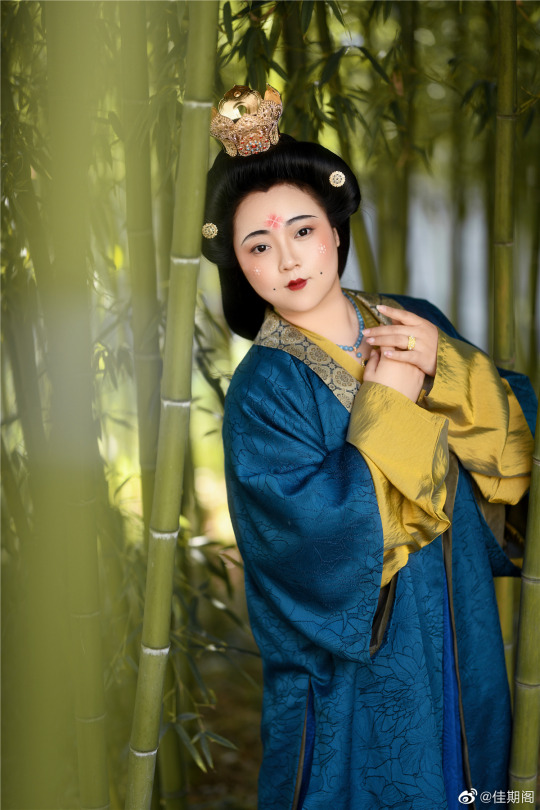



【Historical Artifact Reference】:
Tang Dynasty painted female figurines wearing “披袄/ Pī ǎo”
“披袄/ Pī ǎo” :is kind of formal wear. It is said began in the period of Cao Wei(曹魏)period, and was derived from Yiyi(祎衣). Mostly used in winter.
After the High Tang period, women's clothing became larger and larger, and developed into a very wide style in the middle and late period. At the same time, there are many special fashionable ways of dressing, such as opening the short jacket to become a cloak.

[Hanfu · 漢服]China Tang Dynasty Chinese Traditional Clothing Hanfu & Hairstyle Reference to Painted Female Figurines 【佳期阁-锦雀】
_______
👗Hanfu & Photo: @佳期閣
🔗Weibo: https://weibo.com/6614078088/Mep0zAjoz
🛍️ Tabao:https://item.taobao.com/item.htm?spm=a1z10.3-c.w4002-21517525888.16.328a1c81nZsggv&id=691069284919
_______
#chinese hanfu#Tang Dynasty#hanfu history#hanfu historical relic#chinese historical fashion#chinese historical makeup#chinese fashion history#chinese history#Chinese Style#Chinese Costume#chinese costume histor#Chinese Culture#披袄/ Pī ǎo#佳期阁#锦雀#漢服#汉服
269 notes
·
View notes
Text
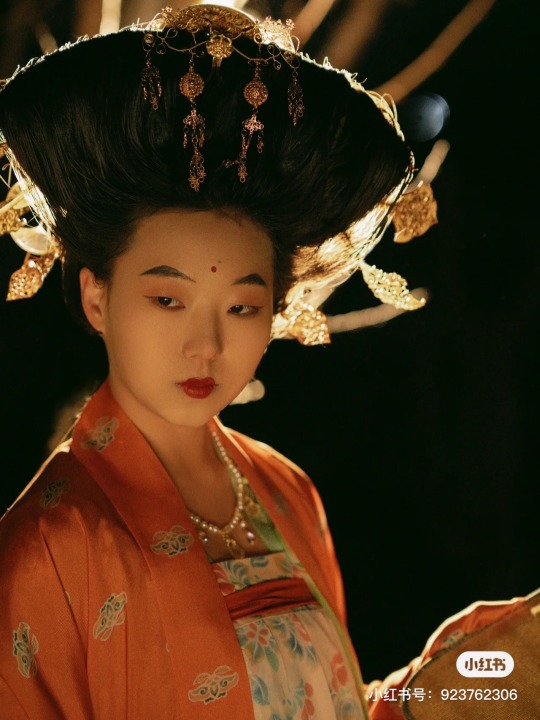
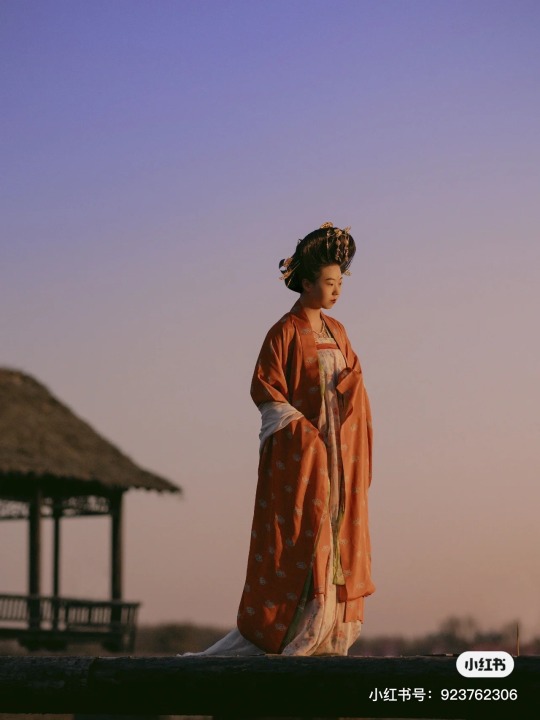
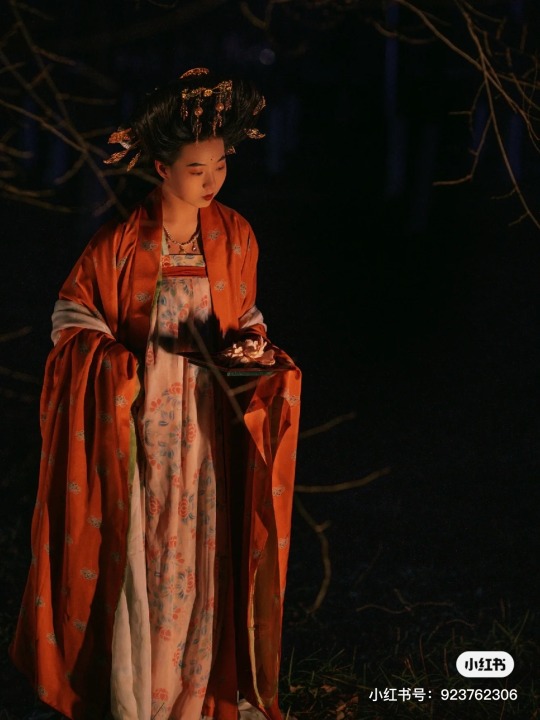
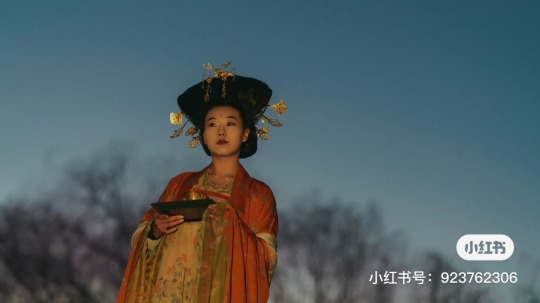
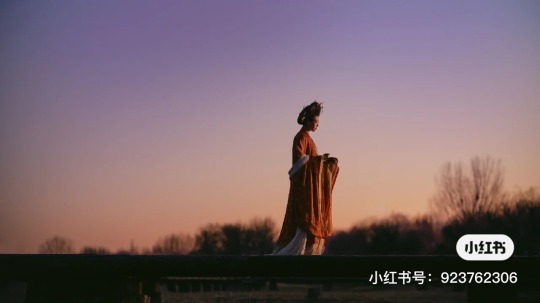
【Historical Artifacts Reference】
・Five Dynasties and Ten Kingdoms Period: Female Figures from the Tomb of the Empress of Min Kingdom (闽国) Liu Hua (Wang Yanjun's wife)


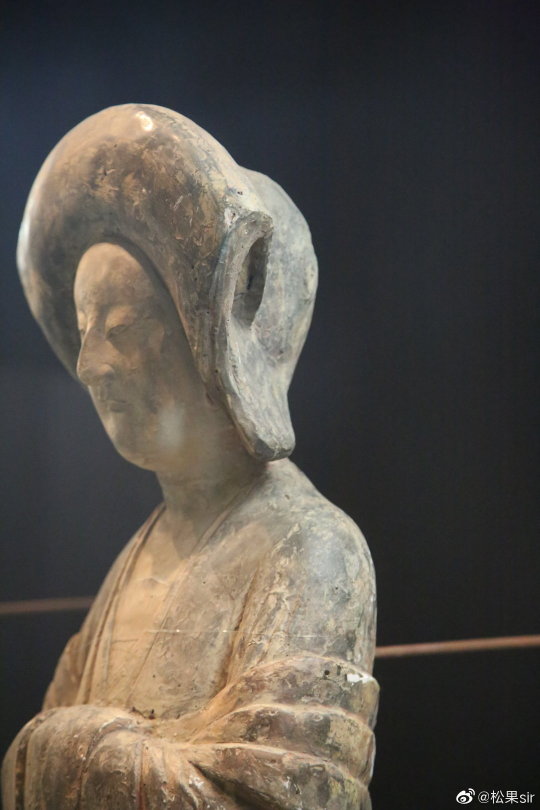
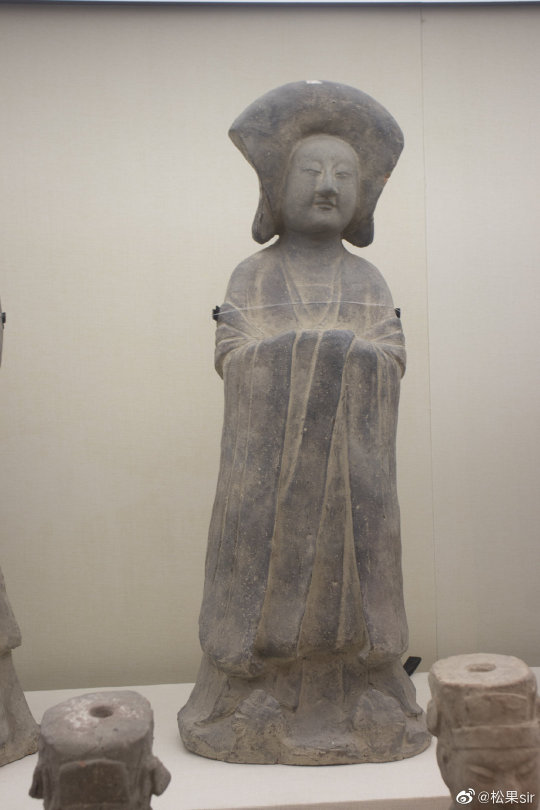
[Hanfu · 漢服]Chinese 【Five Dynasties And Ten Kingdoms Period-Min Kingdom (闽国) 】Traditional Clothing Hanfu Photoshoot Based On Relics
向晚意不适,驱车登古原。 夕阳无限好,只是近黄昏
______________
🧚Model:@暴躁肚肚
🔗XiaohongShu:
______________
#chinese hanfu#five dynasties and ten kingdoms period#Min Kingdom (闽国)#hanfu#hanfu history#hanfu historical relic#hanfu accessories#china history#Chinese#chinese historical fashion#hanfu_challenge#china#chinese traditional clothing#汉服#漢服#暴躁肚肚
112 notes
·
View notes
Photo

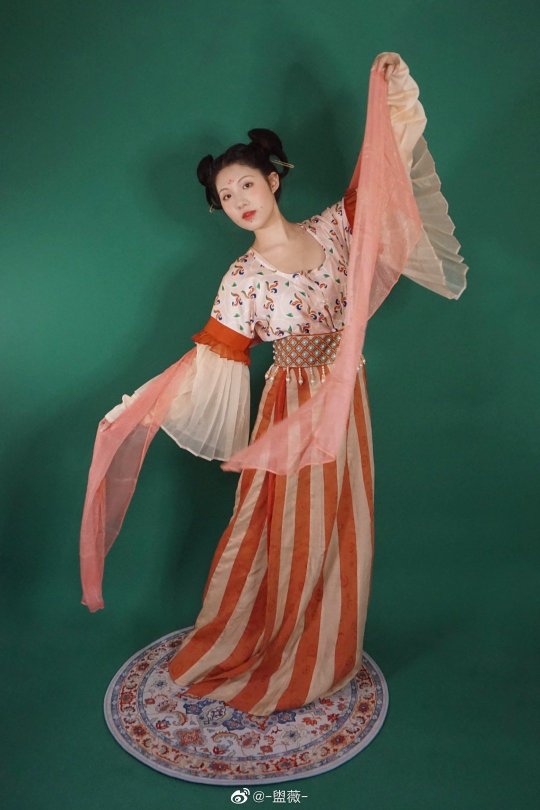
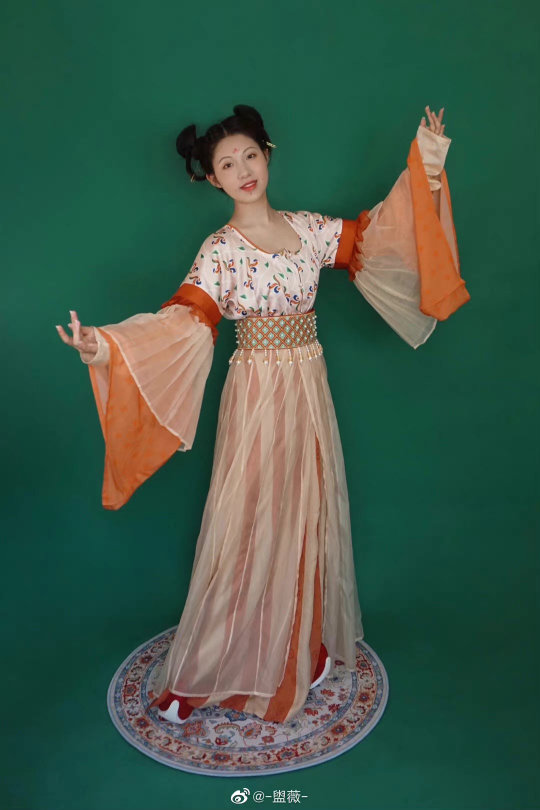


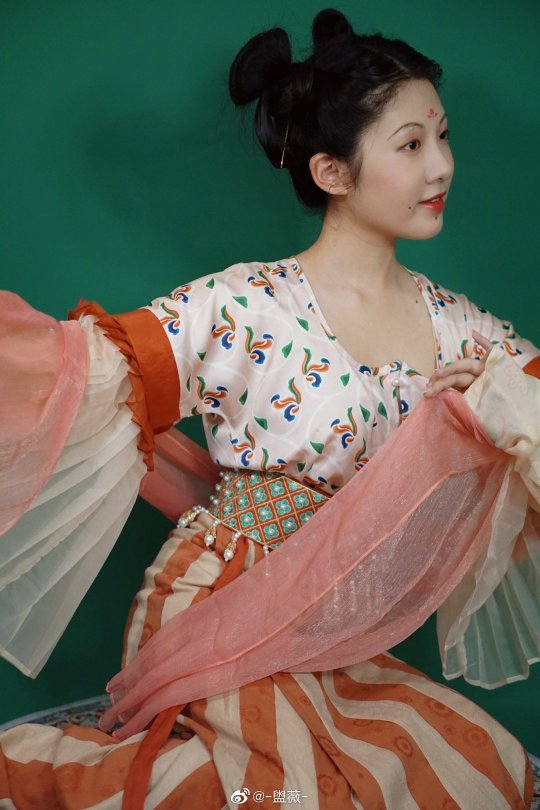


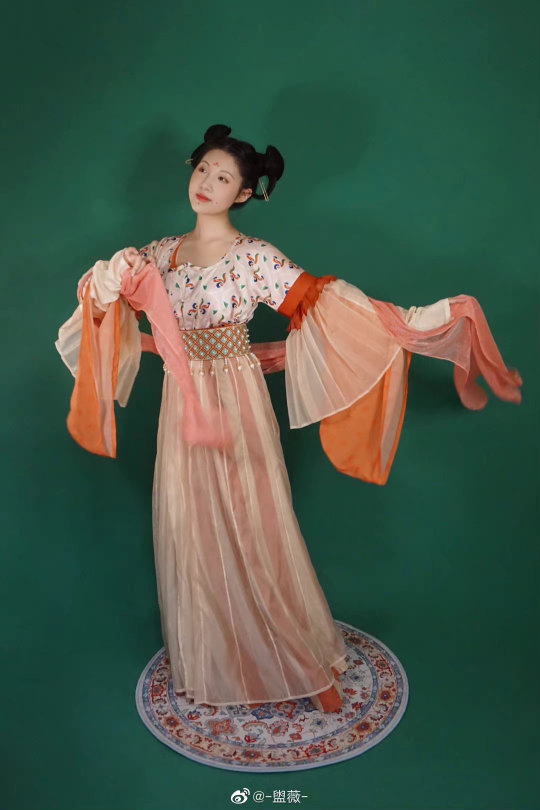


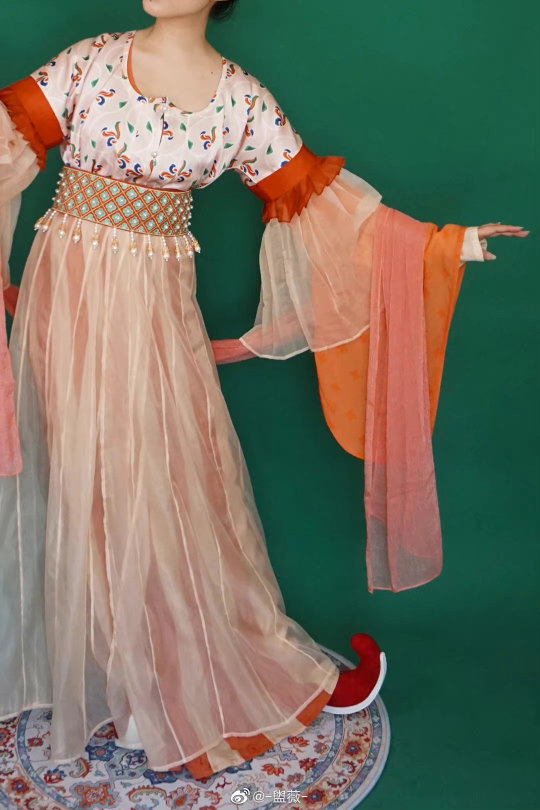
【Reference Artifacts】:
・ China Tang Dynasty Female Dancer Figurine, Brooklyn Museum Collection.
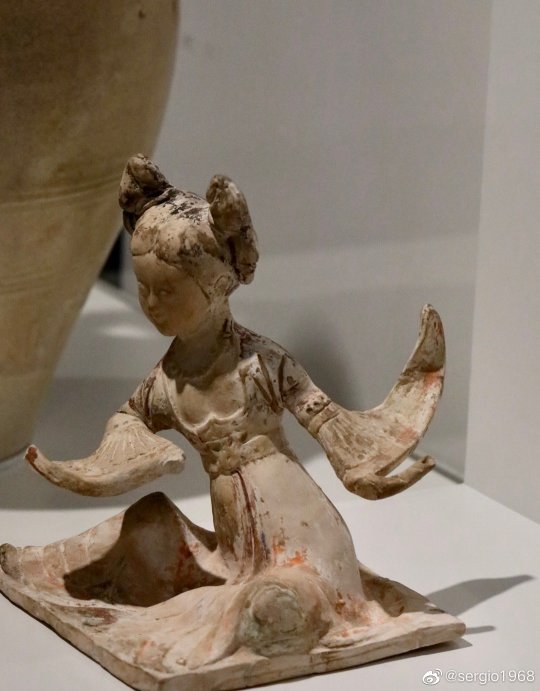
[Hanfu · 漢服]China Tang Dynasty Chinese Traditional Clothing Hanfu & Hairstyle Based on Tang Dynasty Female Dancer Figurine
Early Tang Dynasty Female Dancer Costume
_______
Recreation Work: @ -盥薇-
Hanfu: @青泠谷汉服工作室
Model: @ -盥薇-
Waist Accessories : @香染衣罗传统服饰
🔗Weibo:https://weibo.com/3942003133/M7lOud3cw
_______
#chinese hanfu#Tang Dynasty#early Tang Dynasty#hanfu#hanfu history#hanfu historical relic#hanfu accessories#hanfu_challenge#China History#chinese historical fashion#chinese culture#chinese art#china historical clothing#chinese traditional clothing#chinese history#chinese fashion#chinese style#historical clothing#historical fashion#Tang Dynasty Female Dancer Figurine#-盥薇-#青泠谷汉服工作室#香染衣罗传统服饰#漢服#汉服#yuxiu#tangbeizi#longqun#笼裙#羽袖
158 notes
·
View notes
Photo
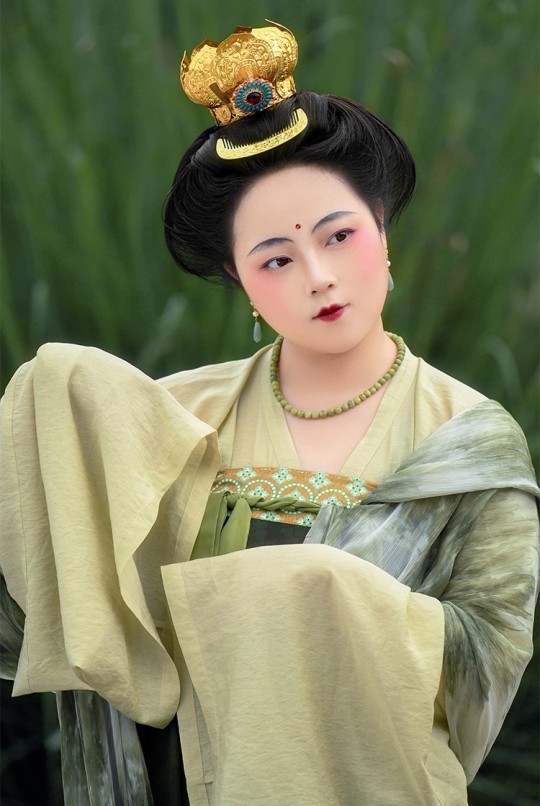
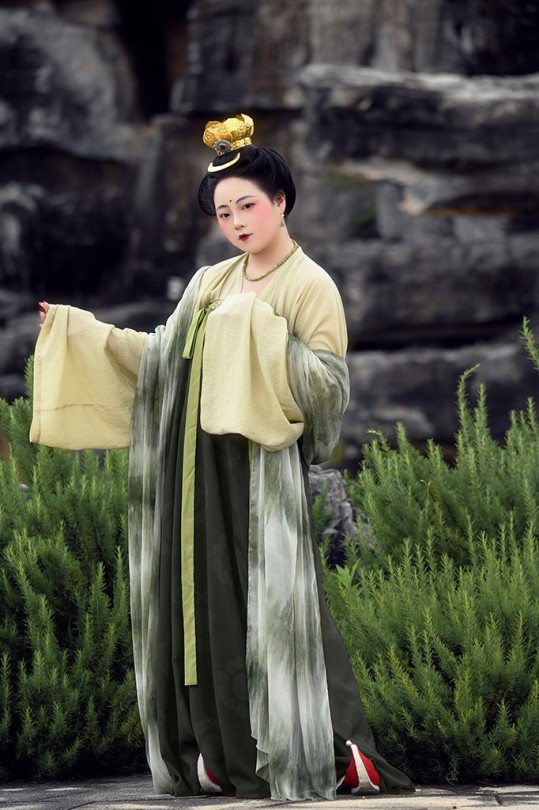
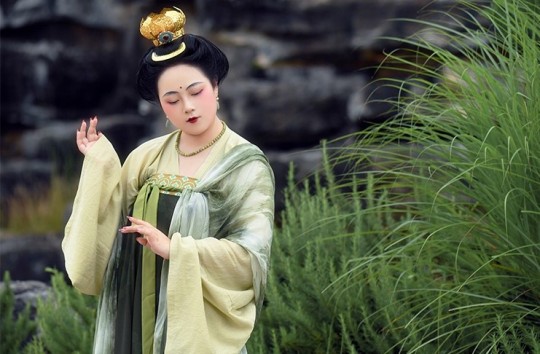
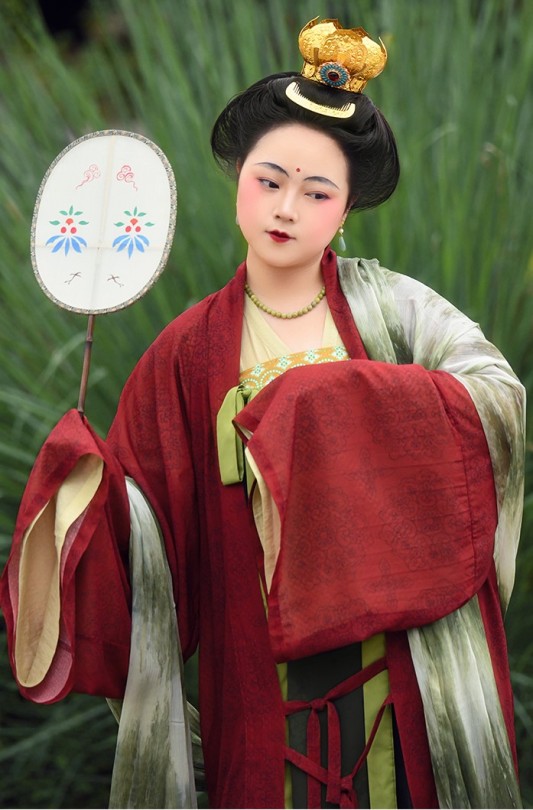




China Tang Dynasty Relics Reference:
Tang Dynasty Lotus crown female figurines



[Hanfu · 漢服]China Tang Dynasty Chinese Traditional Clothing Hanfu & Hairstyle Reference to Tang Dynasty Murals and Figurines 【佳期阁】【织忆】
—————————–
👗Hanfu & Photo: @佳期閣
🔗Tabao:https://item.taobao.com/item.htm?spm=a312a.7700824.w4002-21517525888.24.5dd81c81qhQFdX&id=676149912067
—————————–
#Chinese Hanfu#Tang Dynasty#hanfu_challenge#late tang#hanfu accessories#hanfu history#hanfu historical relic#hanfu girl#Chinese Costume#chinese#chinese history#chinese culture#chinese fashion#chinese fashion history#chinese coustume#china historical clothing#historical fashion#historical costuming#historical hairstyles#Hanfu From China#chinese traditional clothing#Tang Dynasty Lotus crown female figurines#chinese style#漢服#汉服#佳期閣#织忆
167 notes
·
View notes